

































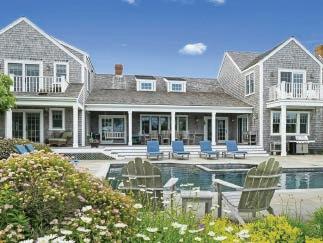























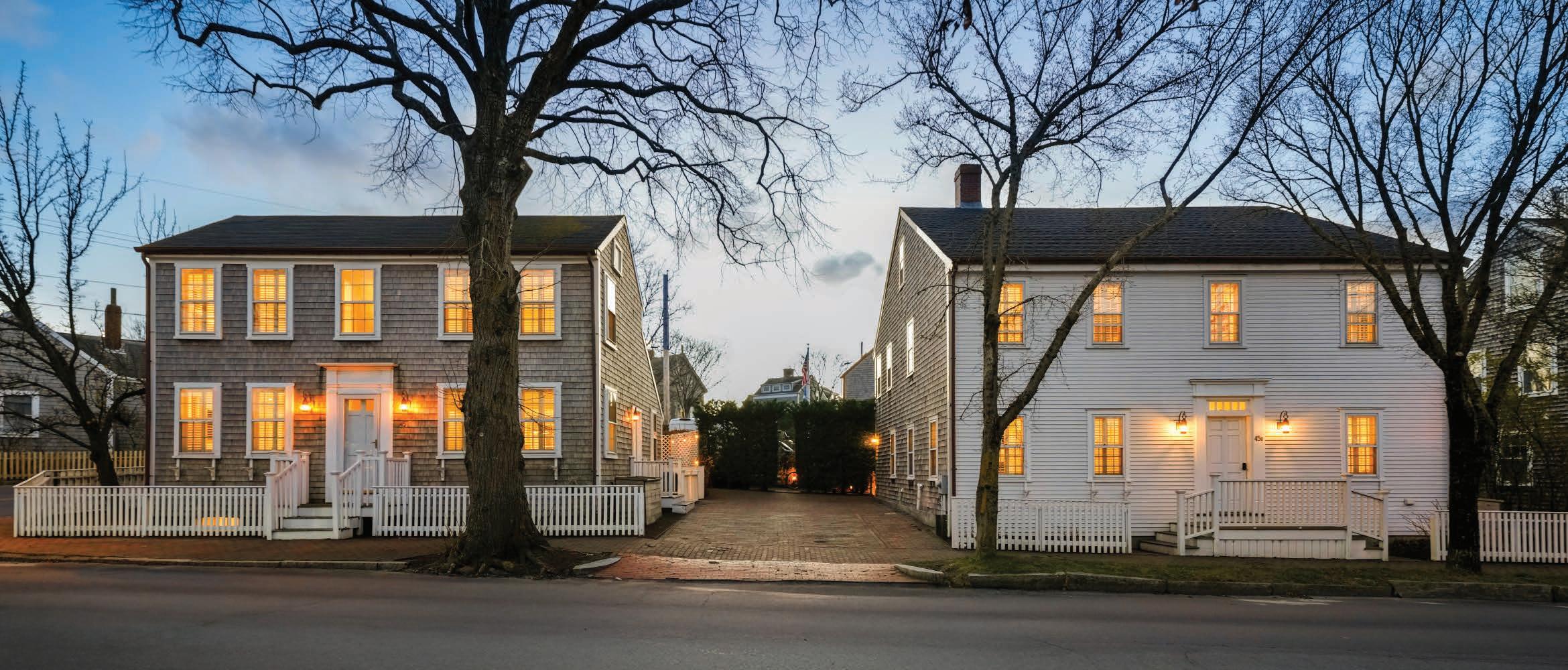









YOUR NEXT HOME AWAITS AT SANDPIPER PLACE II



The Landing is the neighborhood retreat designed for residents, offering a resort style atmosphere creating community and connection. Located in the heart of the neighborhood, The Landing raises the mast with island influenced serenity and thoughtfully planned curated spaces for time with family, friends, and community enjoyment. The clubhouse is both a retreat and an extended backyard for gatherings, among residents. Designed and furnished bringing resort style amenities to a cozy neighborhood setting.

Meet the talented group of writers and photographers who helped make this issue possible.
BY THE NUMBERS
A numerical snapshot of Nantucket this spring.
N TOP TEN
All the places you need to be and see.
NECESSITIES
Put these items on your spring wish list.
NEAT STUFF
Flip through Nantucket Looms’ new coffee table book.
KID’N AROUND
How to keep your kiddos entertained this spring.
NBUZZ
All the news, tidbits and scuttlebutt that’s fit to print, courtesy of the Nantucket Current.

NEED TO READ
Tim Ehrenberg gives his spring reading list.





Sporty Chic at the Westmoor Club.
A look back at parades on Nantucket. 137
A recap of Nantucket’ s hottest events. 128 116
Gabriella D’Ambrosio and Eric Carey tie the knot. 144

PUBLISHER & EDITOR-IN-CHIEF
Bruce A. Percelay
EDITORIAL DIRECTOR
Brian Bushard
ART DIRECTOR
Paulette Chevalier
DIRECTOR OF ADVERTISING & PARTNERSHIPS
Emme Duncan
CHIEF PHOTOGRAPHER
Kit Noble
FASHION PHOTOGRAPHER
Brian Sager
ADVERTISING COORDINATOR
Lola Piuggi
SENIOR WRITER
Jason Graziadei
CONTRIBUTORS
Caitlin Boland
Jurgita Budaite
David Creed
Tim Ehrenberg
Greta Feeney
Petra Hoffmann
Jen Laskey
Larry Lindner
Stacey Marcus
Wendy Rouillard
Moriah Scharn
PHOTOGRAPHERS
Gabrielle Gingras
Charity Grace Mofsen
Chris Tran
CHAIRMAN: Bruce A. Percelay











Even at 30 miles out to sea, we cannot seem to escape the tumultuous world that surrounds us. In our cover story with Ian Bremmer, a renowned global analyst and political scientist, we asked him to help us make sense of the current climate and share his insights, which are normally reserved for CEOs of America’s top corporations and institutions.
Another unsettling issue facing the island continues to be Vineyard Wind’s offshore wind farm, the viability of which seems to diminish by the day. Almost one year out from a catastrophic blade failure that left millions of fragments of styrofoam and plastic strewn across Nantucket’s beaches, islanders are still looking for answers—a saga that has garnered national attention. On top of that, Nantucket could soon see half a dozen other offshore wind farms on the horizon, though the future of offshore wind has become increasingly uncertain. And in ’Sconset, where a controversial erosion-control project to protect Baxter Road received Conservation Commission approval this spring, the battle of the bluff continues to play out.
While one would think a wine festival would be all about grapes and good cheer, this year’s event was stirred up by the White Elephant’s attempt to take over the festival, resulting in lawsuits and confusion. N Magazine
interviewed festival owner Nancy Bean, who will be reimagining the event this year and whose story has created quite a buzz.

BRUCE A. PERCELAY Publisher
N Magazine’s interview with architect Michael Burrey provides a fascinating glimpse into the resurrection of the Notre Dame Cathedral in Paris, which tragically burned six years ago. The painstaking process, with the use of modern technology and old-fashioned craftsmanship, has been responsible for a remarkable rebirth of the historic structure. Another “rising from the ashes” story is that of the Veranda House, which has been totally rebuilt after a disastrous fire three years ago that had the potential to spread throughout downtown.
If ever we needed a port in a storm, the time is now. Hopefully, this summer season on Nantucket provides a respite from the world around us, with calmer days ahead.
Sincerely,

Bruce A. Percelay Publisher

Wendy Rouillard, a longtime Nantucket resident, is the creator of the Barnaby Bear children book series and the writer behind N Magazine’s regular column, Kid’N Around. Her stories and artwork have graced the covers and pages of several magazines and newspapers, as well as more than 25 children’s books. Rouillard is the owner of Barnaby’s Toy & Art, a downtown Nantucket art studio and toy store for children of all ages.

Chris Tran joined the N Magazine team as a sports photographer and contributor for the Nantucket Current in 2023. A Nantucket High School graduate, Tran went on to play soccer and baseball at Lasell University, where he earned a degree in graphic design in 2020. He returned to the island that year to begin his career at The Inquirer and Mirror as a designer, though he quickly discovered his true passion for photography. Tran now combines photography and his love for sports at the Current by capturing the intensity and energy of Nantucket’s sports scene, bringing local athletics to life with his dynamic imagery.


Larry Lindner is a New York Times bestselling author who also penned a nationally syndicated column for The Washington Post for several years. His writing has appeared in The Los Angeles Times, The Boston Globe Sunday Magazine, Condé Nast Traveler and Reader’s Digest. In this issue of N Magazine, Lindner writes about an environmentally friendly alternative to manicured green lawns and rows of hydrangeas. Learn more about Lindner at larrylindner.com.


59 Tons
The amount of garbage collected at the Litter Derby since the team-based trashpicking event began in April 2020.
1,600 Feet
The depth a group of scientists will drill below the ocean floor, testing for a vast freshwater aquifer south of Nantucket.

3,000 Feet

The length of the Sconset Beach Preservation Fund’s proposed extension to its controversial erosion-control project at the base of Sconset Bluff, which received Conservation Commission approval but still requires a vote at Town Meeting.

62
The number of turbines built by Vineyard Wind before a Trump administration executive order applied the brakes to new offshore wind farms.
10,000
105 Million $

The price tag on a new 60,000-square-foot Our Island Home nursing facility, which heads to Annual Town Meeting for an appropriation vote in early May.
1882
The year the original Veranda House opened. A devastating fire destroyed the historic inn in 2022— though its replacement opened in April.

11
The number of new shops and restaurants opening on Nantucket this spring.


The baseline Nantucket deer population, according to a recent estimate by the Massachusetts Division of Fisheries & Wildlife.
200
The number of seats at a new restaurant at the site of the former Schooner's restaurant on the corner of Easy Street and Steamboat Wharf.

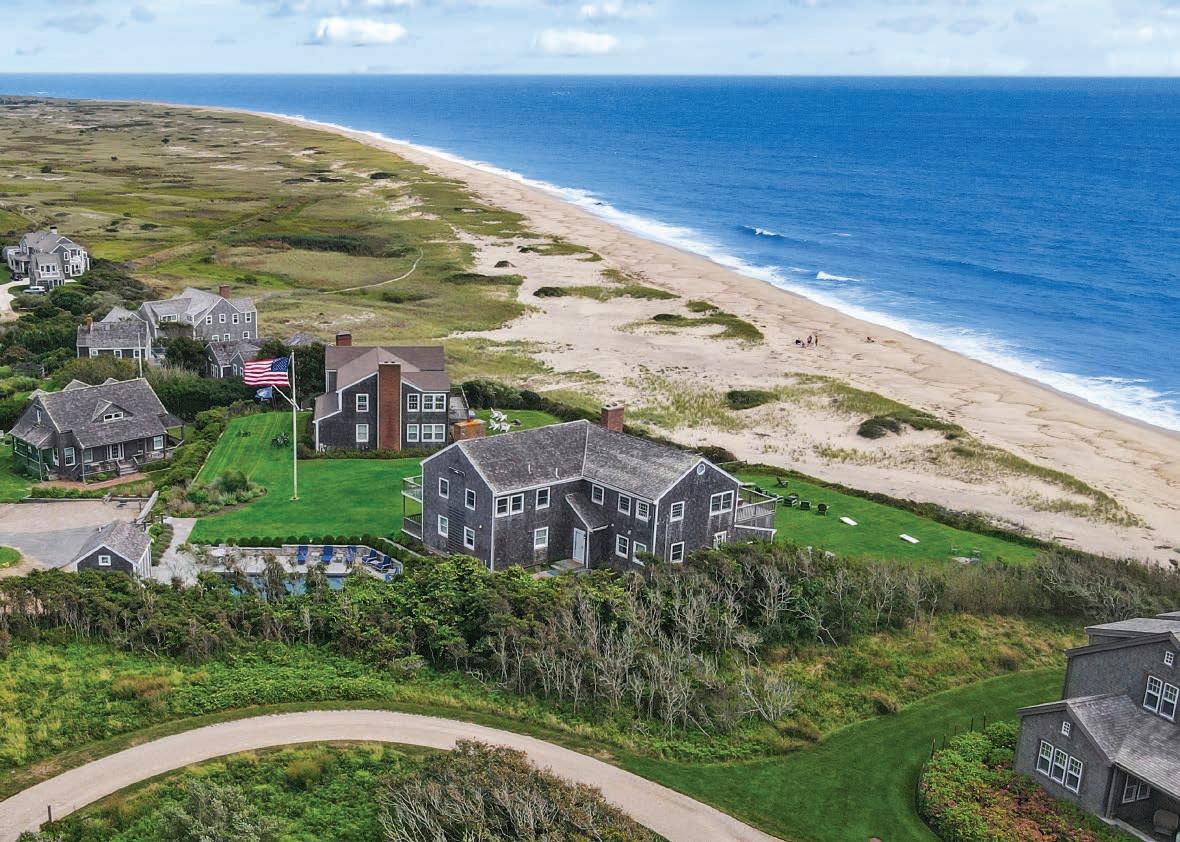



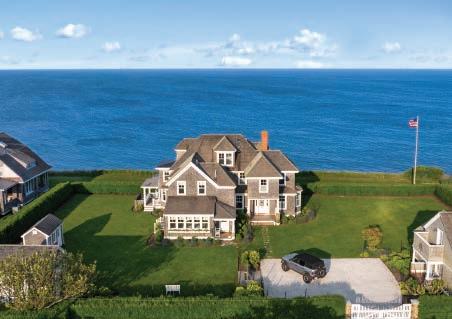


4/25-5/12
AAN “MELLOW YELLOW” EXHIBITION
Thomas Macy Warehouse
One of two April exhibitions from the Artists Association of Nantucket, the “Mellow Yellow” show features signs of spring in shades of yellow at AAN’s Big Gallery at the Thomas Macy Warehouse on Straight Wharf. The second exhibition, titled “Welcome Home” at 8 Federal St., runs through May 12.
4/25
NHA FLOWER POWER
Whaling Museum
Kick off the spring season in your Daffodil Festival weekend best at the Nantucket Historical Association’s annual Flower Power party, and dance the night away inside the Whaling Museum as it’s transformed into a spirited springtime fête. (6 p.m.)
4/26
DAFFODIL FESTIVAL ANTIQUE CAR PARADE & PICNIC
Main Street Nantucket to Main Street Sconset
A popular staple of the Daffodil Festival, the antique car parade features dozens of classic cars staged on Main Street, Nantucket, before parading to Sconset for a festive tailgate picnic. (9:30 a.m.-3 p.m.)
4/26
DREAMLAND
DAFFY PARTY
Dreamland Studio Theater
Nantucket Dreamland’s signature Daffodil Weekend event, the Daffy Party features live music by Foggy Roots, cash bars and culinary delights prepared by island chef Chris Morris. (7-10 p.m.)
4/26-4/27
DAFFODIL FLOWER SHOW
Bartlett’s Ocean View Farm
For two days, the Nantucket Garden Club’s annual flower show comes alive inside Bartlett’s Farm’s garden center greenhouse— the best way to see and smell the beauty of Nantucket daffodils from bright whites to vibrant shades of oranges and yellow. (2-5 p.m., Saturday, 10 a.m.-3 p.m., Sunday)
4/26
DAFFODIL DOG PARADE, BIKE PARADE
Children’s Beach
The Nantucket Safe Harbor for Animals’ Daffodil Dog Parade is back, featuring dapper dogs of all sizes at 12:30 p.m. at Children’s Beach, following the 10:35 a.m. Bike Parade, a show of decorated bicycles, wagons, skateboards and carriages.
5/15
NANTUCKET WINE & FOOD FESTIVAL: ISLAND GALA
Bartlett’s Ocean View Farm


An extravagant wine tasting, the Wine & Food Festival’s Island Gala is a who’s who of winemakers, award-winning chefs and sommeliers, preparing the best they have to offer at Bartlett’s Ocean View Farm. (6:30-9:30 p.m.)
NANTUCKET WINE & FOOD FESTIVAL: LA FÊTE
Sconset Casino
Join more than 20 winemakers and sommeliers serving award-winning wines and the best of Nantucket cuisine at La Fête (7 p.m.) in support of the NWF Culinary Arts program. In addition, the festival is bringing back three signature Grand Tastings, with wines and artisanal food from wineries and restaurants from around the world at Bartlett’s Ocean View Farm.

5/23-11/2
Whaling Museum
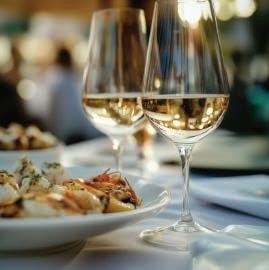
The NHA immerses visitors in the world of Nantucket clothing and textiles, weaving together centuries of island life in this year’s major exhibition aptly named “Behind the Seams,” in the McCausland Gallery of the Whaling Museum.
Sconset Casino
Back for its second year, NCTV-18’s NEW Moon Fest showcases short films made by women filmmakers from around the world for a spectacular night of uplifting, empowering and imaginative cinema at the Sconset Casino. (5-10 p.m.)





















Gail and Ed are the best at making clients feel right at



service every step of the way, and know the Cambridge-area market better than anyone. Buying or selling? Talk to Coldwell Banker Realty’s number two team for their size, worldwide. They’ll treat you right. 617-844-2712 • gailroberts.com


Cartolina’s Marlo midi skirt offers an adjustable fit thanks to its functional wrap design. The breezy cotton voile base is adorned with contrasting embroidery in a chic eyelet pattern and delicate lace trim for the perfect finishing touch.

CARTOLINA
@shopcartolina cartolinanantucket.com
The Sugarloaf Cabochon Cut Peridot offers a bold pop of green masterfully set in a sleek and powerful 18kt gold band, designed to catch the light and enhance the stone’s color and cut. And the Faceted Antique Cushion Cut Peridot, with its unique setting and on full display in a textured 18kt gold band, is both timeless and effortlessly iconic.
SUSAN LISTER LOCKE JEWELER
@susanlisterlockejeweler • susanlisterlocke.com
Made with 40% cacao, this chocolate bar has a rich, velvety-smooth taste that will keep you longing for more. The signature wrapping features Brant Point Lighthouse, roses climbing a trellis in ‘Sconset and a classic woody station wagon.
TUCK SHOP
MULE SPARKLING NONALCOHOLIC COCKTAIL
Mixing notes of ginger beer, lime and a slight hint of lavender, and powered by organic reishi mushroom, this canned alcohol-free cocktail is the perfect addition to your beach cooler. Goodbye hangovers!


LITTLE SAINTS
@littlesaintsco littlesaints.com

Perfect for travel or the clubhouse, this toiletry bag is crafted from 100% hand-stitched needlepoint and trimmed in full-grain Italian leather. It combines sporty charm with timeless luxury, making it the ultimate gift for the golfer in your life.
SMATHERS AND BRANSON
@smathersandbranson • smathersandbranson.com
@shoptuckshop shoptuckshop.com


Handcrafted on Nantucket Island by local artist Lori Garrabrant, these exquisite stoneware platters depicting the Atlantic horizon are the ultimate island souvenir. Ideal for gifting, decorating a modern coastal home, or serving up summer favorites at seaside gatherings and available in various colors!
TWELVE GRAY
@twelvegraystudio • twelvegray.square.site


A look at Nantucket Looms’ new coffee-table book, Nantucket Looms: A Legacy of Style
After one of her many trips to the second-floor studio of Nantucket Looms at its former location at 16 Main Street, Jackie Kennedy Onassis found herself in awe of the “old, almost forgotten techniques of weaving.” There was a unique charm on display at Nantucket Looms that pulled the former first lady in. That charm has continued to resonate with decades of islanders and visitors alike, ever since founders Andy Oates and Bill Euler first opened the shop. Oates and Euler’s work back then, like the pieces made by hundreds of artists and artisans over Nantucket Looms’ 50-plus years, reflects the “moods and aura of the island,” according to the Looms’ new coffee-table book, NantucketLooms:ALegacyofStyle NMagazine sat down with Nantucket Looms’ three partners, Bess Clarke, Rebecca Peraner and Stephanie Hall, to discuss the new book, which hit the shelves in March.
What is it about the style of Nantucket Looms that has resonated with islanders for over five decades?
Bess Clarke: I believe it’s the craftsmanship—seen in our weaving, in the work of the artists we represent, and in the designs we curate. It’s also our connection to the island’s history, which continues to inspire us. Our style draws from Nantucket’s maritime heritage and its natural beauty, but more than anything, it speaks of the emotional connection people have to the island. No matter the size of your home, whether you live here year-round or are just visiting, it is a feeling that we all share. With our book, we wanted to capture a side of Nantucket that feels increasingly rare— where simplicity and elegance are equally valued and where fresh air and sandy feet are welcome. It's a way of life that may be harder to find today, but one we believe is still very much worth preserving.

Rebecca Peraner: Many people have a connection to our business that spans generations. They grew up in homes with our handwoven pieces collected by their parents, and now, as adults, they’re purchasing them for


themselves to celebrate life’s milestones—throws for their new homes or baby blankets. We love being a part of the different chapters in our customers’ lives. We believe our style resonates not only because it is quite classic, but also because it is rooted in tradition.
Stephanie, you have been with the business for nearly 30 years. From what you’ve seen, how has the Looms remained true to its mission or changed, for that matter?
Stephanie Hall: I believe we’ve remained true to the values upon which the business was founded—supporting local artists, creating beautiful handwoven goods on-site to sustain a year-round workforce, and continuing to offer something for everyone, with a range of products accessible at every price point. As tastes have changed throughout the years, it is an opportunity for us to teach new generations about these traditions by continuing to embrace them in our store and designs. In writing our book, our hope is that it allows us to share these traditions with even more people and provides the story of how our business has been shaped by the island’s history and the significant role that craftsmanship has played in interior design. The featured homes in the book showcase the many ways in which elements of coastal craftsmanship can be incorporated into contemporary spaces.
Bess, Nantucket Looms recently celebrated its 57-year anniversary. What are you and your partners most proud of?
Clarke: Our continued support of the island’s artists. We have a simple, time-honored system. Each morning between 9 and 10 a.m., local artisans stop by the shop with their latest work. They show us what they’ve created, and if it feels like the right fit, we take it in on consignment. Over the years, we’ve represented hundreds of artists. There’s so much variety—painters, potters, woodcarvers, basket makers, jewelers. It is this mix that makes the shop so interesting. There is always something new. In our book, we’ve highlighted 13 different artists to give a sense of the range and creativity we’re lucky to be surrounded by. We are also really proud to build upon what our founders, Bill Euler and Andy Oates, started, as well as celebrate the hard work of our long-time owner and my mother, Liz Winship, who was with the business for over 40 years. It’s a tremendous honor to carry on the legacy of a business that has been a part of the community for over 50 years.






STARGAZING THIS SPRING WITH THE MARIA MITCHELL ASSOCIATION
One of the island’s must-do family activities is visiting the Maria Mitchell Association’s Loines Observatory, where stargazers of all ages can experience an unforgettable tour of the night sky with the observatory’s expert astronomers. On May 9, families are invited to join the “Look Up!” program—a free stargazing night designed for children and students. Open night stargazing will also be available on May 23. Additionally, the association’s Aquarium, Hinchman House Natural Science Museum and Historic Mitchell House will reopen for the season on June 9. mariamitchell.org, @maria_mitchell_association
SPRING INTO BARNABY’S TOY & ART
Barnaby’s Toy & Art is kicking off the season with more than 100 art classes for children of all ages. All Barnaby’s art classes are taught by professional educators and artists. Each class will guide your child’s creative processes and techniques in a loving, warm environment right in downtown Nantucket. Children are also welcome to drop in and create their own works of art any time of day. Barnaby’s offers a wide variety of toys and art kits to-go that have been handpicked and designed for all ages. barnabysnantucket.com, @barnabystoyandart



Peachtree Kids is Nantucket’s favorite children’s shop, located at the foot of historic cobblestoned Main Street. Peachtree Kids carries timeless classics and the latest fashions for infants and children through size 14, including clothing, swimwear, shoes, accessories, toys and more. Peachtree Kids supports small, women-owned and sustainable brands including Sammy + Nat, Joy Street, Nantucket Kids, Maddie & Connor Co., Lake Label, Timo & Violet, Smockingbird and Bits & Bows. The shop also features

several Nantucket brands, such as Piping Prints, Tiny Tuckets, Barnaby Bear, Nikki Rene Designs and Liliput Vintage. And stop by on your way to Lizza Obremski’s “Nanpuppet” show at the Atheneum for all “Nanpuppet” merchandise. Open daily 9 a.m.-6 p.m., at 19 Main Street peachtreekidsnantucket.com, @ peachtreekidsnantucket
DISCOVER THE NANTUCKET HISTORICAL ASSOCIATION
Be sure to visit the Nantucket Historical Association’s Whaling Museum this summer. The family-oriented Discovery Center has exciting new additions for children to explore. The NHA’s featured exhibition this year, Behind the Seams: Clothing and Textiles on Nantucket, opens at the Whaling Museum on Friday, May 23, with interactive activities for all ages to enjoy. The NHA also offers two daily programs with its museum guides: exploring life aboard a whaleship and the tragedy of the famous whaleship Essex. These presentations are fun for the whole family. Island families enjoy free admission year-round. NHA.org, @ackhistory



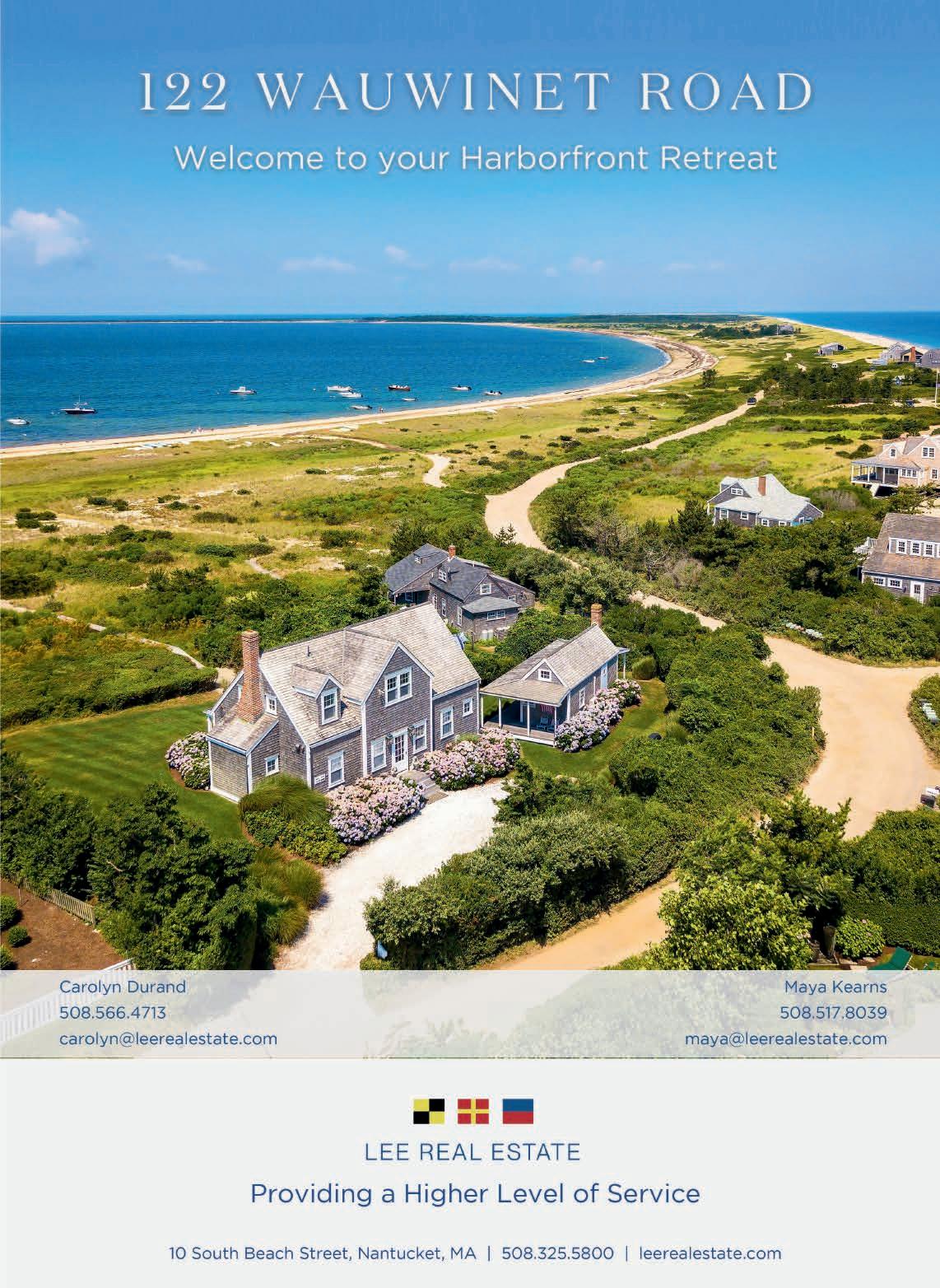
REPORTED BY THE NANTUCKET CURRENT

“DALMATION”
A strange pattern of black dots began to appear on some Nantucket bay scallops in the middle of the commercial scalloping season, sparking fears of a potential parasite and earning the bivalves the nickname “dalmation” scallops. The spots could be a kidney parasite known as bay scallop marosporida, which is believed to have been the culprit for the decimation of the Peconic Bay scallop population on Long Island in 2019, according to Nantucket Shellfish and Aquatic Resources Manager Tara Riley. While the presence of the spots was not a welcome sight for Nantucket’s bay scallop fleet, some scallopers say the spots have only appeared in small numbers. The other piece of good news: an abundance of bay scallops in Nantucket’s harbors that prompted town officials to extend the commercial scalloping season into April, offering some relief for the island’s scallopers.
Faregrounds Restaurant and Pudley’s Pub may soon come to a close, according to a preliminary plan submitted to the Planning Board in March. Under the plan, the restaurant at 27 Fairgrounds Road, as well as an undeveloped lot next door, would be converted into an eight-lot subdivision on a new cul-de-sac development, replacing the iconic restaurant that has stood on the mid-island lot since 1948. Bill and Kim Puder, who have owned and operated the restaurant since 1997, had put Faregrounds up for sale in 2022 but were not able to strike a deal. At one point, the town of Nantucket explored a potential purchase, though that plan did not materialize. The Puders’ new agreement to sell the property is already in place, barring a last-minute third-party Godfather offer. How long the restaurant remains open is yet to be determined.

With lines of cars forming in the early hours of the morning for a vehicle
inspection, town officials in March sought assistance from Nantucket’s state representatives to relieve what has become not only a traffic issue, but a growing source of frustration for island drivers—and the summer hasn’t even started. State Sen. Julian Cyr told the Nantucket Current at the time that he and newly elected State Rep. Thomas Moakley had met with Massachusetts Department of Transportation officials on a potential solution: a first-of-its-kind sticker appointment system. The system would run for a trial period at Don Allen Ford.

The Nantucket Project—the annual gathering of dreamers, visionaries and performers spearheaded by Tom Scott and Kate Brosnan—announced this spring that it will not be holding its four-day event this fall on the island as it has done for the past decade. Instead, The Nantucket Project said it will host a series of smaller events at several locations across the country, including New York City, San Francisco and Chapel Hill, North Carolina—as well as Nantucket.

“Our goal is to more boldly bring our work, work that many of you play a critical role in, to more people and more places throughout the country," Scott said in an email message to The Nantucket Project supporters. Tickets to The Nantucket Project had cost upwards of $10,000 per person, though the annual event had provided a shoulder season jolt for the island.
The Atheneum announced in February that after nearly two decades, it was ending the “One Book, One Island” community reading program, a yearly staple of the library that brought islanders together to read a carefully selected book followed by events and discussions. Despite the program’s long run of success, the Atheneum acknowledged “shifting engagement levels and evolving community needs prompted thoughtful reflection on its future.” Past selections have included a wide array of fiction and nonfiction titles, each chosen to spark conversation and reflection. The program’s success was made possible through local organizations, volunteers and funders, including the Tupancy-Harris Foundation and the Hale Family Foundation.
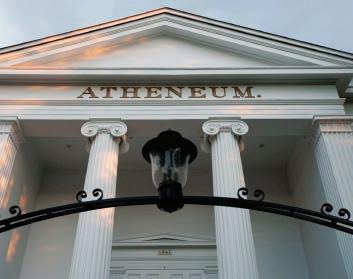
After years of debate, the Conservation Commission in March approved a nearly 3,000-foot expansion to the Sconset Beach Preservation Fund’s erosion-control project at the base of Sconset Bluff, though the so-called

battle of the bluff is far from over. While the expansion still needs a favorable town meeting vote to proceed, the commission’s approval marks the largest expansion to the 950-foot project since it was permitted 10 years ago. The approval comes five years after the commission rejected another near 3,000foot expansion, and as the SBPF comes under fire over violations of its permit, primarily stemming from a deficit in the amount of mitigation sand required to be poured on top of the project to keep the geotubes covered and counter downbeach erosion—a violation that prompted the commission to order the SBPF to remove the project three years ago.

SCAN HERE to connect with @TimTalksBooks

For even more book recommendations, follow @timtalksbooks on Instagram.
All books available at Mitchell’s Book Corner and Nantucket Bookworks or online at nantucketbookpartners.com.



THE RIVER IS WAITING BY WALLY LAMB (Publication June 10)
FEVER BEACH BY CARL HIAASEN (May 13)
THE EMPEROR OF GLADNESS BY OCEAN VUONG (May 13)
The Nantucket Book Festival is coming up this June. To gear up for this literary lovefest and my personal favorite weekend of the year, don’t miss these anticipated books on shelves this month. Wally Lamb is one of my favorite novelists, and his newest book, The River Is Waiting, is a gut-wrenching tale of an unimaginable tragedy and an emotional epic of forgiveness. Fever Beach is classic Carl Hiaasen, hilarious and pure entertainment on every page. Ocean Vuong delivers another poetically perfect story in The Emperor of Gladness, one that makes you pause at the beauty of his sentences and the rawness of his characters. All three writers will join us for the Nantucket Book Festival from June 12-15 along with two dozen other celebrated authors.
For more information and the event schedule, visit nantucketbookfestival.org. For even more book recommendations, follow @timtalksbooks on Instagram.
All books available at Mitchell’s Book Corner and Nantucket Bookworks or online at nantucketbookpartners.com.

(May 6)
What’s in a name? Can a name change the course of your life? If my name wasn’t Tim, would my life be different? These questions are at the very heart of one of my favorite reads of the year so far: The Names by Florence Knapp. We follow Cora and her son over the course of 35 years in alternating versions of their lives based on what Cora names him at birth. The setup for this story is highconcept, and I haven’t read anything quite like it before. I was nervous how the author was going to pull it off, but this one truly lives up to the hype. I was wholeheartedly engrossed with each version of the Atkins family, laughing and crying with them at every plot point. Like all great fiction, it makes you think deeply about your own life and its possible alternate realities. I read hundreds of books a year, many I will forget after I turn the final page, but this one has that special spark, and I’ll never forget its name.

(May 6)
The Artist and the Feast is a work of literary art, a novel of and for the senses. The year is 1920. The place is the south of France. There is a famous yet reclusive painter, Edouard Tartuffe, who is hailed as the “Master of Light.” His only companion is his niece, Ettie, until a journalist comes to town with hopes of interviewing the artist. From these three characters comes such an intimate and captivating novel. I love art in fiction, and I love being able to visualize a piece of art from the author’s description. The fictional art pieces sketched out in this novel— The Feast, Young Man with Orange and Bathers at Arles—are so vividly painted with words that it feels almost as though you’re viewing them in a gallery. This novel holds more secrets than just beautiful art. It’s a mystery, a love story and a commentary on creativity, thwarted ambition and women being lost to history.

BY KEVIN WILSON
(May 13)
Sibling relationships always fascinate me, being so biologically similar to someone, yet so different. The sibling saga in Run for the Hills is a bit unique. Reuben Hill, abandoned by his dad 30 years ago, begins a road trip to track down his half siblings, also abandoned by their dear old dad. The novel takes us from an apartment in Boston to a farm in Coalfield, Tennessee, to the University of Oklahoma, to Salt Lake City and all the way to California in a quirky story about a family brought together under the most unlikely circumstances. You’ll be along for the cross-country ride as the four siblings bicker and bond as only siblings do, and you’ll watch with one eye open as the story culminates in meeting the father that left them all.

BY RON CHERNOW
(May 13)

Pulitzer Prize- and National Book Awardwinning biographer and expert storyteller Ron Chernow turns his sights to a literary legend in his latest epic tome, a brilliant account of the father of American literature, Mark Twain. I remember when I first read The Adventures of Huckleberry Finn in my school literature class. It was one of the first times I appreciated a classic work. Years later, I am fascinated with the inner workings of the people behind the books they write. Similar to what Chernow created with Hamilton and Washington: A Life, we get to know the actual person behind the historical acclaim. Born in 1835 as Samuel Langhorne Clemens, we see Twain in the context of his times and living in the political and cultural circumstances of his day. The book is bursting with archives, personal letters and unpublished manuscripts, plus secrets and facts you’ve never heard before, ensuring you’ll be the Mark Twain expert at your next book club or literary dinner party.
BY ELIN HILDERBRAND
(May 6)
(May 6)
Who doesn’t love a Fredrik Backman book? I will never forget the character Benji from the Beartown series or the cantankerous retiree in A Man Called Ove. Backman’s back with a heartrending tale of four friends whose powerful bond reverberates through the years. Like The Artist and the Feast, this novel also contains an art element effectively embedded into the story arc. Most people don’t even notice three tiny figures sitting at the end of a long pier in the corner of one of the most famous paintings in the world. Twenty-five years later, Louisa is in possession of the painting and goes on a search to learn how the beloved piece came to be. If you’ve never read a novel by Fredrik Backman, get ready for emotional tugs on your heart and soul. You’ll think back on your past, examine your present and consider calling up any long-lost friends. Oh, and you’re sure to shed a tear or two.
BY NANCY THAYER
(April 22)
For more of a local flair this month, don’t miss these two books from our leading ladies of Nantucket fiction. Elin Hilderbrand is back in our beach bags with The Blue Book, her updated recommendation guide to Nantucket interspersed with scenes from her novels and enhanced with watercolor art by the talented Meredith Hanson. This book is perfect for planning your Nantucket vacations, as a keepsake of your favorite island or as a gift for your guests visiting this summer. Summer Light on Nantucket is Nancy Thayer’s 38th novel. We become part of the Benedict family on their annual summer trip to Nantucket as they bask in the sun, sympathize with the joys and struggles of parenthood, and swoon over rekindled relationships with first loves. Thayer always provides the happiest kickoff to island summer reading. You can purchase autographed copies of both titles at Mitchell’s Book Corner or online at nantucketbookpartners.com.



















WRITTEN BY STACEY MARCUS
IMAGES COURTESY OF KRISSY CAMPBELL
he Daffodil Festival not only illuminates the beauty of the bright blossoms on Nantucket; it also provides opportunities to sample some showstopping arrays of food. Doralee Nolan, a judge at the Sconset tailgate picnic for over two decades, has seen the picnic become very competitive over the years. “They go all-out and start planning for next year’s picnic the day after the picnic,” she said. “People used to set up on Saturday mornings, then on Friday nights, now on Thursday nights.”
Krissy Campbell has been involved in the picnic for 10 years, though she still considers herself relatively new to the Daffodil Festival. After missing one year for her daughter’s dance recital, she decided to go all out for the festival ever since, first with her friend and boss at the time, Beth English of Current Vintage. “We served wine and cheese from the store,” Campbell said.
Eventually, Campbell started bringing more food and a variety of drinks, and the whole thing grew. “I have so many yellow decorations and outfits. I can’t stop buying them,” she said. Campbell, along with some family and friends, typically serves crudités and antipasti, as well as a main meal item, such as North Shore roast beef sandwiches, bacon-wrapped hot dogs or pulled pork— and always deviled eggs. For dessert: decorated daffodil cookies and mini cupcakes.
Last year, Campbell’s friend, Casey Boukus, had a theme for the first time, “Bee-Witched,” which featured yellow bees and witches. They won third place. “Although I didn’t even know we were officially in the running,” Campbell joked. “Now, I’m even more addicted.” This year, her theme is “BarBees,” at the request of her daughter. Campbell shared her recipe for butter cut-out cookies with N Magazine, a recipe she has been making for every holiday and occasion for 20 years.
• 3 sticks unsalted butter, softened
• 1½ cups sugar
• 4 large eggs
• 2 teaspoons vanilla extract
• 6 cups cake flour, plus more if needed
• 2 teaspoons baking powder
• 2 teaspoons salt
• 3 egg whites, whipped
• 1 cup heavy cream
• 4 cups confectioners’ sugar, sifted
• 1 teaspoon vanilla extract
• 1 teaspoon orange extract
• Food coloring, as needed
Cream the butter and sugar together until pale and mousse-like, then beat in the eggs and vanilla. Beat in the baking powder and salt.
Switch to a paddle mixer and add the flour. Mix until combined. (If the mixture is too sticky to be rolled out, add more flour, but do so sparingly, as too much will make the dough tough.)
Halve the dough and form it into two fat discs. Wrap each half in plastic wrap and let them rest in the refrigerator for at least 1 hour. Preheat the oven to 350 degrees.
Sprinkle a suitable surface with flour and place one disc of dough on it (not taking out the other half until you’ve finished with the first).
Sprinkle more flour on top and roll it out to a thickness of about ¼ inch. Cut into shapes, dipping the cutter into flour as you go. Place the cookies a little apart on the baking sheets.
Bake for 12 to 14 minutes, until lightly golden around the edges. Cool on a rack and continue with the rest of the dough.
When the cookies are all fully cooled, in a separate bowl, whip the egg whites until they form soft peaks. Add the sifted confectioners’ sugar, heavy cream and extracts, and mix together, adding more cream as needed to form a thick paste.
Frost the cookies. I use accordion piping bottles with tips #1, #2, #3 and #4. Sprinkle with sparkle sugar.
David Handy of Handy & Dallaire Events has been providing recipes and inspiration from basket to blanket for over a dozen years, curating blow-out tailgates with everything from tablecloths and flowers to scrumptious spreads. He shared a bright and zesty pasta salad perfect for the Daffodil Picnic, featuring fresh green and yellow ingredients to match the festive theme. This dish is easy to transport, serves a crowd and is bursting with springtime flavors. “While not a traditional family recipe, it’s a dish that has made its way into gatherings, always bringing a festive, elegant and delicious touch to the table,” Handy said.

Serves: 12-15 | Prep Time: 20 minutes
Chill Time: 30 minutes
• 2 pounds farfalle (bowtie) pasta or rotini
• 1½ cups basil pesto (homemade or store-bought)
• Zest and juice of 2 lemons
• 1½ cups cherry tomatoes (yellow or golden), halved
• 1 cup yellow bell pepper, diced
• 1½ cups fresh peas or edamame
• 1½ cups cubed fresh mozzarella or feta
• ½ cup toasted pine nuts (optional)
• ½ cup grated Parmesan cheese
• ¼ cup olive oil
• Salt and pepper to taste
• Fresh basil and lemon slices for garnish
1 2 3 4 5 6
Cook the pasta in salted water according to package instructions. Drain and rinse under cold water.
In a large bowl, toss the pasta with pesto, lemon zest and lemon juice until well coated.
Add the yellow cherry tomatoes, bell peppers, peas (or edamame) and cheese, mixing gently.
Drizzle with olive oil, season with salt and pepper, and sprinkle in the Parmesan and pine nuts.
Chill for at least 30 minutes before serving to allow the flavors to meld.
Garnish with fresh basil and lemon slices, then serve in a large bowl or individual picnic cups for easy sharing.
Festive Tip: Serve in a woven basket lined with a yellow-andgreen checkered cloth for the ultimate Daffodil Picnic aesthetic.

The building on the corner of Easy Street and Steamboat Wharf was known for years as Schooner’s. It was the first place you saw as you hopped off the Steamship throughout the ’70s and ’80s. In 2009, it reopened with the simple yet apt name, Easy Street Restaurant. During the summer of 2015, a restaurant named Nabe served sushi and mac and cheese there, though it only lasted for a year.
But for the past decade, the building has mostly sat empty, save for a few short stints as a retail pop-up. This spring, the building will reopen, once again as the Easy Street Restaurant.

“Every time I would walk by that place, it was empty, and for me, I always thought that this is the face of Nantucket,” said Milan Basnet, the owner and manager of the new restaurant.
“You get off the boat and the first thing you see is an empty building. I said, ‘This place needs life.’ It’s right on the water, right outside the ferry.”
Basnet—a former manager at a handful of off-island restaurants such as The Friendly Toast, IHOP and TGI Fridays—struck a deal with longtime property owner Todd Arno to lease the property earlier this year, receiving the green light from the town for a 200seat restaurant that he said will focus on quality local ingredients, with a modern and experimental spin. His recipes include an island fried rice with pineapple, buttered rice, peas, bias-cut green onions, sweet chili glaze, and chicken or beef.
Nantucket is not entirely new

for Basnet. His fiancée Rekha has been coming to the island for years, working at Nantucket Cottage Hospital. Basnet said now that he’s on the island, his goal for the restaurant is to have it open for breakfast, lunch and dinner as a gathering spot for a good time and good meal. “We’re incredibly excited,” he said.
Before Basnet took over the space, the 0.8-acre property had been eyed for years by town officials, as well as by the Land Bank and Steamship Authority, who saw it as a strategic location. Town officials even met in executive session as recently as 2023 to discuss a potential joint acquisition of the lot that would see it used to expand and potentially raise Steamboat Wharf, provide open space alongside the Land Bank’s recently developed Easy Street Park, and improve parking for the Steamship.
In an April 2023 statement, the three entities said the property would improve Steamboat Wharf “as the gateway entrance to the island for
future generations,” citing a need to enhance “public safety, coastal resilience and economic security.”
The Easy Street Restaurant puts a damper on those plans, at least for now—though the restaurant is a welcome sight for diners after years of dormancy on the bustling corner.
As Basnet told the Nantucket Current in March, the building “has so much potential. I always wanted to put some life into that place.”

WRITTEN BY JEN LASKEY
A seasonal selection of wines and cocktails from local purveyors—plus a buzzy tipple with a booze-free twist.
Renewal is the theme of the season. Why not embrace it with a new wine, cocktail or nonalcoholic drink? Whether you need a glass of something to warm you up after a chilly beach walk, to sip while listening to a chorus of spring peepers in your backyard or to tote to your tailgate picnic on Daffodil Day, Nantucket’s drinks purveyors have an array of resplendent sips for you.



Clone Pinot Noir, 2019
$70/bottle
2023
$28/bottle
Recommended by NANCY BEAN, Owner, Nantucket Wine & Food Festival
Ken Wright, who has been making wine in Oregon for nearly 40 years, put Oregon on the wine map. This year, he will be spotlighted by the Nantucket Wine & Food Festival. Nancy Bean, who owns the festival, refers to Wright as a legend, someone who grew Oregon's Willamette Valley and is known for pioneering single-vineyard pinot noirs. His 2019 Hirschy Vineyard Wädenswil Clone Pinot Noir will be featured at the Harbor Gala. A medley of black plum, huckleberry and red licorice, this wine boasts silky tannins with herbal and sweet spice notes, Bean said. It pairs well with all sorts of spring and summer foods—from grilled salmon, lamb chops and filet mignon to barbecue pork ribs, pepperoni pizza and beet salad with goat cheese.
For a refreshing spring white, Bean recommends Wright’s 2023 Willamette Valley Chardonnay. This wine is juicy with crisp flavors of white peach, green apple and pear. “It’s refined and elegant, and has great depth and complexity without being heavy,” she said. “With its bright acidity, crisp minerality and rich fruit flavors, it’s great to pair with seafood and shellfish.” After the festival is over, Bean said she looks forward to getting her kayak back in the water, sipping a glass of this wine on her back deck with a friend—and then going to chase the sunset at Miacomet.
SOPHIE SCHAAL, Alsace Riesling, 2023, $22/bottle

“Don’t be afraid of riesling!” That’s the message from Erin Hepinstall, who hopes to encourage more Nantucketers to embrace the noble grape. Despite what many people think, riesling wines aren’t always sweet, especially when they come from Alsace, a region in northeastern France known for its ultra crisp, dry rieslings. This one from Sophie Schaal, which is made from organically grown grapes, is “super friendly and approachable,” Hepinstall said. “Honeyed florals and beeswax notes give great weight without any cloying sweetness. A laser-focused finish of citrus fruit and mineral-driven acidity keep things fresh and lively on the palate. It can go from sunshiny days to chilly evening meals pretty effortlessly.”
Hepinstall absolutely loves spring on Nantucket and tries to get outside as much as possible. As the days get longer, she looks forward to outdoor potlucks with friends. “This wine will absolutely be my contribution this year,” she said. Hepinstall recommends pairing this riesling with oysters—or any shellfish. “It would also be so delicious with any sort of soft, aged goat cheese, like a Bûcheron or Humboldt Fog.”
Spring has its glorious moments, but it’s not every islander’s favorite season. “I don’t love the rainy spring days on Nantucket,” Elizabeth Pereira admitted. Pereira and her husband, Brian, took over Épernay Wine & Spirits on North Beach Street from Jenny Benzie and Kirk Baker last year. But on a sunny day, Pereira often rejoices with a bottle of fourth-generation winemaker Paul-Henry Pellé’s La Croix au Garde Sancerre. “This wine is refreshing and uplifting,” she said. “It rounds out a good day and gives hope of warmer weather to come.” Sipping it, “you can almost taste summer coming.”
Bright, crisp and aromatic, this sauvignon blanc from Sancerre in France’s Loire Valley pairs well with lighter spring foods and fish. “I love how well it pairs with white fish,” Pereira said, adding that it would also “be wonderful in a picnic with charcuterie, cheeses, pâté and some deviled eggs—a perfect part of any Daffodil Croquet party.” And with its citrus notes and minerality, she said, “it’s also amazing with pad thai.”

“What is not to love about spring on Nantucket?”
Orla LaScola asked. “All the restaurants and small businesses begin to reopen, our favorite guests start to return, Nantucket’s year-round residents come out of hiding. The community starts to reconnect after winter, it is the absolute best time here.” The Queen Bee, a new cocktail on the menu at The Proprietors Bar & Table this spring, “speaks to the freshness and brightness of the season—and our food menu at this time of the year,” LaScola said. “We love the light, fresh notes in this cocktail. It has a touch of sweetness, but it is tart and light. The floral notes in the gin and the hint of ginger make it very refreshing.”
LaScola suggested sipping the Queen Bee and nibbling on some light snacks from the Proprietors menu, such as chef/partner Nathan Hanyzewski’s hummus plate with snap peas and pickled peppers or his smoked whitefish salad with brown bread and crudité.

• 2 ounces gin (LaScola loves Sông Cái Floral Gin in this recipe)
• ½ ounce of honey syrup*
• 1 ounce of freshly squeezed lemon
• Drop of ginger bitters
• Lemon twist for garnish
• Combine all ingredients over ice in a shaker.
• Shake for approximately 30 seconds.
• Strain into a chilled martini glass.
• Make a fresh twist of lemon peel, twist to release oils and rub over the glass top. Enjoy!
NOTE
The Queen Bee can be split between two glasses and topped with Champagne for a fun twist—or for a lighter option.
* For the honey syrup:
• Combine equal parts honey and water in a small pot on the stovetop on medium heat until you can easily whisk them together.
• Leftover honey syrup will keep well in the refrigerator, covered, for up to two weeks.
Created by Matt Hayes, the Pepe Picante is one of Ventuno’s most popular warm-weather cocktails. A tropical riff on the classic martini, Hayes’ version is made with tequila as its base spirit, instead of vodka or gin. He revs it up with mango and lime juices, as well as a jalapeño, habanero and poblano chile-infused agave-based simple syrup. “It’s light, fun and nicely balanced,” Hayes said. “You get sweetness from the mango juice, tartness from the lime juice and a little bit of sweet spiciness from the agave syrup.”
The rich yellow color makes the Pepe Picante look like sunshine in a glass. “It can take you from spring right into summer,” Hayes said. And while he thinks the Pepe would be an ideal après-festival cocktail for any of Nantucket’s spring festivals (he loves going to all of them), he said, “It’s definitely the drink for a Daffodil cocktail party.”
Recipe courtesy of VENTUNO
• 1½ ounces blanco tequila (Matt Hayes recommends Casamigos)
• ½ ounce lime juice
• 1½ ounces mango juice
• ½ ounce spicy agave syrup*
• Combine all ingredients in a shaker with ice.
• Shake, then strain into a martini glass.
• Garnish with a lime wheel.

*For the spicy agave syrup:
• In a medium pot, combine 2 cups agave nectar, 2 cups water, 1 habanero pepper, 1 jalapeño pepper and 1 poblano pepper. (This recipe can be halved for a smaller batch.)
• Bring to a simmer over medium heat, then remove from heat and let cool.
• Strain out the chiles before using, and store leftover spicy agave syrup in the refrigerator.

If you want to rosé all day without risking a hangover, this sparkling nonalcoholic apéritif is a great option. Enjoy it as an alternative to actual rosé wine or use it to stay hydrated in between glasses of the real stuff. The base of this pretty pink drink is a blend of pear, grapefruit, raspberry and lychee juices. It gets a little kick from red wine vinegar and ginger extract, plus added nuance from chamomile, cardamom, rooibos and rose extracts.
Marketed as “adaptogen rich,” the Très Rosé also contains extracts of lion’s mane and reishi mushrooms plus the amino acid L-theanine for a “mood-boosting buzz.” There are no mushroomy flavors in the drink at all. What you smell and taste is tart, juicy and refreshingly fruit-forward with dominant berry fruit leather notes and subtle florals. It’s more complex and more like a lightly effervescent sparkling wine (Lambrusco, for example) than a typical soda. De Soi Très Rosé comes in cute 8-ounce cans or 750-milliliter bottles.

WRITTEN
BY
BRIAN BUSHARD PHOTOGRAPHY
BY
KIT NOBLE
The Nantucket Wine & Food Festival returns this May, but it almost didn’t happen.

When a hostile takeover attempt threw the future of the Nantucket Wine & Food Festival into jeopardy last year, there came a point when Nancy Bean thought the festival she had run for nearly two decades might not return. She worried the hours of planning and coordination she had already put in for the 2025 festival might all be for nothing—and she thought she would be out of a job.
When a partial settlement put a stop to that takeover last fall—for the time being—Bean said the first thing she felt was tremendous relief.
“My whole livelihood almost got taken away from me,” she said, reflecting on the attempt by a Boston-area wine and liquor company to replace the festival. “I’m really proud that I stuck with this and that it’s happening. All of the insane amount of triple-time work that we had to do to catch up and make it happen is so worth it. It’s so worth it, and it’s our honor to be able to do it.”
“I am very proud and I also am honored that so many people helped me and believed in [the festival].”
– Nancy Bean
The Wine & Food Festival has become a springtime Nantucket staple since its first iteration in 1996, a series of elaborate events and grand tastings with Champagne, rosé, hors d’oeuvres, purveyed meats and artisanal cheeses. The scene has become well-known on Nantucket: chefs prepare oysters and caviar, while winemakers boast some of the finest bottles from around the world.

But just one month after the last glass of wine was poured at the 2024 festival, the event’s future was suddenly cast into doubt. Bean heard about it through a series of email blasts and social media posts from Walthambased Gordon’s Fine Wine & Liquors.
settlement preserves all claims against Gordon’s.
“When things did go in my favor, we had been at a point where there was going to be no festival if something didn’t happen, and luckily we had an injunctive hearing that expedited things,” Bean said.
Bean announced less than two weeks after the injunctive hearing in November that the festival would return in 2025—with a new home base at The Nantucket Hotel, and tastings and other events at Bartlett’s Ocean View Farm and the Sconset Casino.

Those emails and posts claimed Gordon’s had purchased Bean’s longrunning festival. The company also claimed it had struck a deal with the White Elephant and would rebrand the event as the Nantucket Food and Wine Experience. That was all news to Bean.
Gordon’s later clarified it had not purchased the event but instead would launch a separate Wine Experience over the same week in May as the Nantucket Wine & Food Festival. Bean took Gordon’s and the White Elephant to court, and in November, she reached a partial settlement with the White Elephant preventing the hotel from conducting any event with Gordon’s in May 2025 or 2026. The



“I am incredibly proud,” she said. “I have three daughters, so what’s the message going to be, that you’re going to back down because it’s too hard to keep fighting and it’s too expensive? I am very proud and I also am honored that so many people helped me and believed in it because it was really hard.”


“My whole livelihood almost got taken away from me.”
– Nancy Bean

The Nantucket Wine Festival was founded in 1996 by Denis Toner, a longtime Nantucket seasonal resident. Bean began her tenure in 2007 as the director of operations, and in 2012, Toner sold the festival to Bean and her then-business partner Mark Goldweitz. Since then, Bean has become the sole owner of the festival—acquiring it for approximately $1 million, according to the lawsuit—and rebranded it as the Nantucket Wine & Food Festival. These days, the festival draws over 4,000 visitors annually, according to Bean.

While there will be several new venues this year, Bean said the spirit of the festival will remain the same. There are still the wines from around the world, as well as dinners and hors d’oeuvres that celebrate the cuisines of multiple countries, along with some of the best food Nantucket has to offer. The winemakers who travel to Nantucket come from Australia, New Zealand, South Africa, Argentina, Austria and Hungary.



And this year, there is a spotlight on pinot noir from Oregon’s Willamette Valley, with a luncheon at the Nantucket Inn. Other tastings take place at American Seasons, The Nantucket Hotel, private residences and Bartlett’s Farm.
“What’s exciting about Bartlett’s is it’s a stunning location,” Bean said. “We’re all about food, which brings us back to agriculture and farming. It’s such a beautiful location for all of these tasting events to take place, and it makes sense. We can also spread out a bit more. We’re not confined to a small space.”
The festival also returns to the Sconset Casino for the first time in over two decades, with events including a Judgment of Paris wine tasting and the festival’s La Fete, a high-end dinner in a venue Bean lauds as “stunning.”
“For the consumer, it’s going to be exciting because there are some new things, and some things have been reimagined,” Bean said. “For those who had heard about [the festival] and never come, it’s going to be just what they thought, and for those who have come before, it’s going to be every bit as good as it’s always been. We have a lot more to do.”
“For those who have come before, it’s going to be every bit as good as it's always been.”
– Nancy Bean


INTERVIEW BY BRUCE A. PERCELAY
Political scientist and global strategist Ian Bremmer provides his world view.
Ian Bremmer is the founder of the political research and consulting firm Eurasia Group, which primarily advises private sector enterprises on how to manage political risk. With offices around the world, Bremmer’s opinions are highly sought after, particularly during times of political instability. He has published 11 books, including the New York Times bestsellers, Us vs. Them: The Failure of Globalism, and The Power of Crisis: How Three Threats—and Our Response—Will Change the World. Bremmer launched a digital media company called GZERO Media and the national public television show GZERO WORLD with Ian Bremmer on PBS.
N Magazine sat down with Bremmer, a Nantucket summer resident, at his New York City headquarters for a wide-ranging discussion about the impact of President Donald Trump’s tariffs, our relations with our allies, the status of the war in Ukraine and the Middle East, as well as the state of democracy in America.
How did you end up on Nantucket?
I’m from Chelsea [Massachusetts]. I grew up in the projects and didn’t even know Nantucket existed. When I was a kid, someone once said, “Nantucket,” but I misheard them and thought they said, “Nantasket,” because I had been to Nantasket Beach. Much later in life, after I had set up my family and was finally ready to take a proper vacation—I was thinking about where I wanted to go. Someone said to me, “Why don’t you go to Nantucket, you would love it there,” knowing my New England roots. I looked it up online, found some places sight unseen, and rented a little cottage on Warren Street for a month. I took the ferry, and as I got off, I saw something that had only existed in my dreams before, and I said, “Clearly, this is the place for me.”


Do you feel that the U.S. has been unfairly treated by other countries in terms of tariffs, and is there a justification for leveling the playing field?

Broadly speaking, I would say no. The U.S. today is the wealthiest large-scale economy in the world by far. Look at the U.S. and our quality of life, our productivity and entrepreneurship compared to Europe over the last 20 years. Europe is poorer than Mississippi. You have to look at that and say, how is it that these guys are taking advantage of us? The idea behind free markets and more open access is that the most powerful country and the largest economy in the world will do much better if it has access to all of the markets around the world. Trump has said that if a country is

running a trade surplus against the U.S., that means they’re taking advantage of us, so we need to zero that out with tariffs. That’s the way it was formulated. But let me give you two counterexamples. There are countries around the world where the U.S. is running a trade surplus, Brazil and Australia, for example. By Trump’s own definition, that means that the U.S. is taking advantage of those countries. Well then, why did we just add 10% tariffs to those countries? That argument doesn’t hold.
Secondly, there are many countries in the world that are incredibly poor that run trade surpluses with the U.S. because they cannot afford our goods. Madagascar, Lesotho and Bangladesh are not going to buy high-end American products. They don’t have a market for that. We want their inexpensive textiles. That’s why we run a trade surplus with them. Adding massive tariffs to those countries does not help us. All that does is make those goods more expensive for the U.S.

China is the 800-pound gorilla in this trade war and they have taken a very hardline stance. Where do you see this going?
The Chinese understand that they are more dependent on the American economy than the U.S. is on the Chinese economy. A tit-for-tat trade war will hurt the Chinese economically more than it will hurt the U.S., but having said that, it would hurt the U.S. politically more than it would hurt China. The U.S. is a democracy, and the Chinese are not. America is a highincome country that’s not willing to take an awful lot of pain and we’re short-term in orientation. The Chinese are not. That’s the bet that the Chinese are taking, that they can outlast Trump.
de-risk away from China and the Chinese de-risk away from the U.S.
For our lifetimes, we’ve lived in a world of U.S.-led globalization, a system of common values and standards and rule of law where we work to bring tariffs as low as possible so that goods, services and capital can move across borders as fast and efficiently as possible. For the last 15-20 years, that system has persisted but without active U.S. leadership. You can point to the failure of the TransPacific Partnership as the beginning of that, which was under President Barack Obama—and then Trump killed it. Now, you can say the U.S. is actively looking to dismantle the system of globalization and in its place live by the law of the jungle, where the U.S. can impose its standards on other weaker countries, and that it would remake that global order in our image. There are significant obstacles to making that work effectively.

What is your prediction as to how this gets resolved?
It’s going to be easy to come up with deals with almost every other country in the world to get to a yes, including by restructuring the USMCA [United States-Mexico-Canada Agreement] with Mexico and Canada. With China, it’s a lot harder. My level of uncertainty that we will fix this with China is very high. There’s no breakthrough, there’s no scenario where Trump and Xi Jinping get back together and we take the tariffs off. The two options are a complete decoupling, which is very messy and unmanaged, and leads to economic pain on both sides. Or there is a half deal without trust that brings us back to 60% tariffs instead of the 125% that we’re looking at now, where the Americans
that were announced, and that was only the opening salvo. And he has credibility because he’s not running again and the Democrats have no popularity or leadership on these issues right now—and Trump is surrounded by loyalists who are not going to speak crosswise to him. If he wanted to ignore the markets and lead to more pain, he could have, but he chose not to. For that reason I don’t think that there is a significant short-term risk of a self-induced global financial crisis, but there’s a large long-term risk that America is no longer trusted by countries around the world as a safe place to make long-term commitments. Long-term, we are taking steps to ensure that countries make smaller bets on the U.S., and it’s not just about tariffs. It’s also about Russia and Ukraine, about the way we treat foreign students and tourists. All of these things erode trust in the U.S.

The biggest fear on Wall Street is the bond market. Do you see a scenario where the bond market could turn it into something far more dangerous for the economy?
That’s what Trump responded to in April. He didn’t respond to two days of the stock market tanking; instead he responded to the bond vigilantes. He was worried we were heading to a global financial crisis. It was certainly plausible if he had stuck to his guns on the across-the-board tariff levels
Is the erosion of trust unique to Trump, or to his predecessors, as well?
It’s not unique to Trump. The erosion of trust has been happening incrementally for decades. You can point back to the global financial crisis, which started in American free markets. You can point to the wars in Iraq and Afghanistan, the longest war the U.S. has been in. We can point to a lot of things that have happened



“The biggest question for the U.S. in the next year is not about the economy, but about the political system.”
– Ian Bremmer
the U.S. is putting on them, not only directly but indirectly through third countries where the Americans are trying to squeeze trans-shipment. Long-term, as America tries to shut down globalization, shut down USAID and aid in the global south—and as the U.S. supports Israel in a war where the majority of countries take the other side—China has other opportunities. If the U.S. pulls out of the Paris Climate Accord, the Chinese—who are driving new technologies in renewable energy—will become a dominant force, and America will be in the margins. If the U.S. pulls out of the WHO [World Health Organization], China will become the dominant country in future policies.
Does the current situation increase the risk of China invading Taiwan?
that have made Trump symptomatic, and also the biggest beneficiary of the fact that American trust has eroded.
At the end of the day, who is the winner? Will China emerge stronger 10 years from now?
When you’ve had a system of globalization that for the post-war period has unlocked unprecedented global growth, allowed a global middle class to emerge, and allowed China to become a middle-income country— and then to undo that—that doesn’t create winners. It creates losers all over the world. The question is who are the bigger losers and who are the smaller losers. The U.K. is the smaller loser, ironically, because of Brexit, a major goal of the U.K. economy until now. Now, the fact that they’re not in the European Union gives them more flexibility vis-à-vis the U.S. China’s economy is significantly underperforming, and they’re going to get hurt in a big way by the pressure
No, I don’t think so. China’s economy is doing badly right now and it will do worse because of this conflict. China is trying to become selfdependent on semiconductors as quickly as possible, but they are not there. Right now, they desperately need Taiwan and [the Taiwan Semiconductor Manufacturing Company] for their own economy. A conflict with the U.S. over Taiwan would cause unprecedented damage.
The political pendulum has been swinging quite wildly in the U.S. We’re now seeing Democrats coalesce around the growing unpopularity of Trump. Could you see the pendulum ultimately swinging back to the left?
Of course. Joe Biden was not capable of running again. He needed to be pushed out, and they needed an open primary. Kamala Harris was an incumbent, and when asked if she would do anything differently, she said she wouldn’t do anything differently and she lost. Canada is going through this.
Justin Trudeau was the incumbent but unpopular. His deputy prime minister forced him out. She ran an open primary and lost. They’re now bringing in Mark Carney. In an environment where incumbency has become a singular disadvantage, you’re going to see bigger swings, and that’s a vulnerability Trump has as we look to the midterms.
The amount of money saved by Elon Musk and his Department of Government Efficiency seems to be relatively small at this moment. Is it a political pipe dream to reduce the deficit in a meaningful way?
Virtually no one in Congress is interested in reducing the deficit. They all have things they want to spend money on. President Trump himself has no problem running deficits. He doesn’t like trade deficits, but he has no problem with budget deficits. That’s a drag on the U.S. economy if you’re not
spending money wisely. Look at the wars in Afghanistan and Iraq. That’s trillions of dollars that should have been spent on the American people. There’s a lot of fat in the U.S. government. DOGE is going to reduce the workforce by something like 10%. That’s not a rounding error—it matters, and it’s not going to significantly undermine the ability of the U.S. government to produce. But where DOGE could be more effective is in using artificial intelligence inside the government systems to identify regulatory overlap and inefficiency.
I also see DOGE driving ideological programs. The things they’re trying to cut are because they are perceived to be progressive, woke or connected to Biden. That creates a chainsaw as opposed to a scalpel approach. There was waste in USAID, but there were also things that were cut that are going to kill millions of people. I see DOGE as a double-edged sword, and I’m deeply uncomfortable with the idea that the person in charge of DOGE is also a Trump donor and the richest person still in the private sector. That strikes me as kleptocratic and a conflict of interest.
I don’t think we know. You can look at the basic numbers around Medicare and say the population is changing. The number of older people is becoming greater, which requires you to change the nature of the program, when people get benefits and what those benefits are. But we also know that American productivity gains through entrepreneurship and advanced technology are far greater than what we’re seeing in Europe. We know China is not an attractive place to store wealth because they have much less transparency into their systems. To say the U.S. is going to become unsustainable implies that people are going to go someplace else, and you have to tell me where that is. We don’t yet have that other place.
What is your view of where we will be a year from now based on current policies in Washington and their impact on the economy?
The biggest question for the U.S. in the next year is not about the economy, but about the political system. The U.S. is already by far the most coin-operated, kleptocratic political system of any advanced industrial democracy. The reason we got Trump is because so many people already believed the U.S. didn’t have a functioning democracy. Trump is the principal beneficiary of that, but he’s not trying to fix it. When you see his willingness to weaponize a number of departments like the DOJ, FBI and the IRS against his political enemies, you have to start asking whether the U.S. persists in terms of its fundamental rule of law, or whether we have a constitutional crisis. That’s where you have to look at whether the judiciary will stand up and contain an executive that doesn’t want to adhere to its rulings.
Trump is under fire for many things he is doing but are there aspects of his agenda you think are positive?
Applying artificial intelligence into government operations (through DOGE), increasing efficiency and reducing regulatory overreach and overlap is extremely important, and other countries around the world will try to follow a similar strategy. Trump's orientation towards ending wars is important. Trying to bring the war in Ukraine to an end is overdue and welcome. I'm also glad to see Trump leaning into diplomacy with Iran, with the intention of a broader deal.
Some feel democracy is threatened under Trump? What is Your View?
It’s in more trouble than at any other point in my lifetime, but that’s different from saying it’s about to collapse. I don’t think we’re on the precipice of a civil war, or becoming a dictatorship. The U.S. is not going to be Russia over
the course of Trump. We still have an independent, professional military, a federal system with elections run state by state, and a Supreme Court that rules independently even today. There have been decisions in the last week that are unprecedented in undermining some fundamental pillars of American democracy.

Long-term, are you optimistic about where the country is going?
Long-term, I’m an optimist. The power of new technologies that will unlock human capital is transformative and coming fast. We’re actually creating solutions faster than we’re creating problems. It’s an amazing time to be a kid right now. I think 2040 or 2050, in a world with at-scale, inexpensive, decentralized, abundant sustainable energy for everyone—that’s amazing in terms of wealth and what you can do with it. I think about what AI is capable of doing in terms of anyone around the world having access to world-class knowledge and solutions for education, medication and selfdevelopment. How can you not be an optimist in that environment?














WRITTEN BY BRIAN BUSHARD
BY BRIAN SAGER
After restoring several Nantucket buildings, Michael Burrey took his talents to Paris.
Michael Burrey could only watch as Paris’ iconic Notre Dame Cathedral burned down on April 15, 2019. Burrey was watching the fire on TV, some 3,000 miles away with his students at the North Bennet Street School, Boston’s renowned traditional trade school. There was nothing Burrey could do to save the 12th-century cathedral’s crumbling spire or its wooden ceiling, but the fire got him thinking.
Burrey, a specialist in medieval architecture with a career of historic restoration projects under his belt, started working with architects and architectural historians on a reproduction of one of the cathedral’s ceiling trusses in
Washington, D.C., as an educational project to show that the trusses could, in fact, be rebuilt. That re-creation caught the hopeful eye of a French company contracted to restore Notre Dame. Through that company, Burrey was brought on as one of only nine U.S. artisans to restore the cathedral, a monumental project that had Burrey in Paris for three months in 2023.
Now, six years after the fire, Notre Dame is open once again. N Magazine sat down with Burrey in his classroom at North Bennet Street School to discuss his work in Paris and Nantucket.


You’ve worked on multiple restoration projects on Nantucket and have been recognized by the Nantucket Preservation Trust. What brought you to the island?
I’ve been working in preservation carpentry and masonry since I was 13 years old, and my base

is in Plymouth. I’ve been working with Brian Pfeiffer, an architectural historian who has done a lot of work on Nantucket documenting buildings and structures. My introduction to Nantucket was in 2007 when Brian called me up to ask if I had ever built a firebox underneath a chimney. It was 18 India Street, a 1767 house, that had suffered a collapse of the base of the chimney. I flew over, took a look at it and determined I could cradle it, pick it up, dig out from underneath it and reestablish the base of that chimney.
It was one of my favorite projects. They were going to start dismantling the chimney from the top down, but realized you had to support that chimney because it was leaning toward the back, and at
some point the whole thing was going to tear up and collapse into the cellar.
You also worked on the Unitarian Meeting House, another historic structure on Nantucket. How did that come about?
There were a number of things that led up to that. In 2009, we were out there stabilizing the trusses inside the roof system, and in 2010 we scaffolded the whole front of the building. We repaired all of the handmade shingles. Those were from the 1830s, when they built a new bell tower. We repaired windows and returned architectural elements that had been lost like the front door. At the bell level, we returned the railing to the way it was. We looked at photographs from the Nantucket Historical Association and determined what kind of railing was there to reproduce.

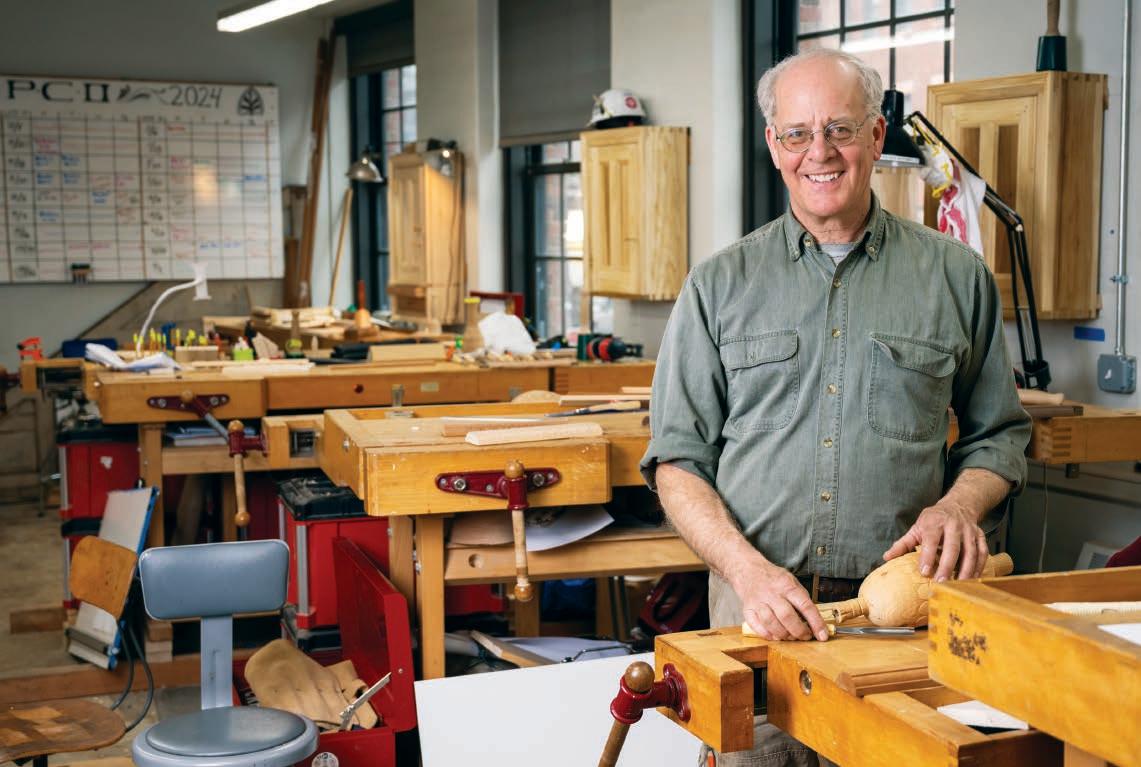
What goes into historic restoration? Where do you source your material?
I produce it myself because it’s hard to go to a sawmill and say this is what I’m looking for. There’s always something lost in translation. I go out to the log yards and buy specific logs. I look at the quality of the logs, the dimensions of the log, whether it’s old growth, how many growth rings it has per inch. Then I have a WoodMizer band sawmill, which is a portable sawmill, so you saw through it in the same manner they did in the 17th, 18th and early 19th centuries. It’s not just finding a white pine but a good quality white pine that has good rot resistance.
Speaking of things being lost in translation, how is it that you ended up contributing to the reconstruction of Notre Dame Cathedral?
It goes back pretty far. For the last 20 years I’ve been working at Handshouse Studio in Norwell, Massachusetts, with Rick and Laura Brown, who are both sculpture professors at MassArt [Massachusetts College of Art and Design]. One of the first projects I worked on with them was the Turtle, a Revolutionary




War-era submersible built by the Bushnell brothers designed to get a load of gunpowder below the water line and attach it to a British “man-ofwar” in New York Harbor. We took a six-foot-diameter spruce tree, split it in half, hollowed it out and rounded the outsides. Everything was done in a period manner. Pumps were done in a period manner. All of the blacksmithing was done as a blacksmith would in the 1770s. We took it out in Duxbury Harbor, sank it and propelled it, and then we took it down to Annapolis, Maryland, to the Naval Academy, and they dragged it through the water to test its dynamic abilities. That’s now in the International Spy Museum in Washington, D.C.


It’s that kind of thing, how the Egyptians raised a 300-ton obelisk, how 300-pound stone balls were thrown with trebuchets in Scotland. [Handshouse] was doing these historic projects when Notre Dame burned. I was here at North Bennet and we’re all watching it as it came through the newsfeed and we’re all saddened by this event of this incredible cathedral losing its original roof system, and then all the knowledge and talent that went into that construction 800 years ago. We were all wondering what we could do to help repair that.
It was through the [Washington, D.C.] truss project that we made contact with one of four French companies that got the contract to build the roof structure and the spire. They were looking for
interactions with Americans to create a collaborative effort. Rick and Laura chose me and Jackson DuBois, the president of the Timber Framers Guild, to go over and represent us at Notre Dame.
You have called that project the pinnacle of your career. How does it stack up to other historical restorations?
It’s literally the pinnacle. It’s the spire of the cathedral. It’s pretty wild. It’s still in some sense a little hard to believe. Medieval history is something I’m very interested in, and all the carvings involved in it. The spire to Notre Dame Cathedral is new by relative standards. It was built by Eugène Viollet-le-Duc from the 1840s to the 1860s. His inspiration was medieval architecture, and he designed it based on that. To be able to go over there, work on carvings—those quatrefoils, trefoils, railings, dormers—and have it be presented on the cathedral itself is pretty cool.
Had you been inside the cathedral before it burned down?
No. I had only seen pictures, and of course there’s the notoriety of Notre Dame. It was on my bucket list to see, and I had spent a lot of time in England but not the rest of Europe. To go over there, spend three months in a medieval town called Thouars, which is two hours south of Paris, and work with a company that has fantastic French carpenters who are very skilled was all fantastic.
With so many new buildings popping up, and historic homes being gutted, do you believe historical renovations and traditional craftsmanship have become a lost art?
There’s opportunity for it to return, but it has been lost over the years in terms of the craftsmanship that we have established over thousands of years, which has been let go for modern conveniences, modern materials and modern engineering needs. But in the case of Notre Dame Cathedral, one of the big questions they had when it burned was if they had the talent to reproduce it in kind. Carpenters Without Borders is a group of international timber framers and artisans who got together in front of Notre Dame

and built truss number seven, and executed it quickly. They showed the country and the world that these abilities still exist out there, and at that point, the decision was made that they could make this happen in five or so years. What Notre Dame has exhibited is that all of these trades still exist—the stone carvers, the timber framers, the wood-carvers and stained glass artists and organ builders— all these things that were lost in Notre Dame. All these tradespeople, about 2,000 of them, got together and worked on the restoration, and that’s what’s important to say to people. There aren’t just these trades of electricians, plumbers and carpenters, but there are all these other trades—timber framers and stained glass artists and stone carvers—that are still viable means of making a good income and enjoying what you do.

















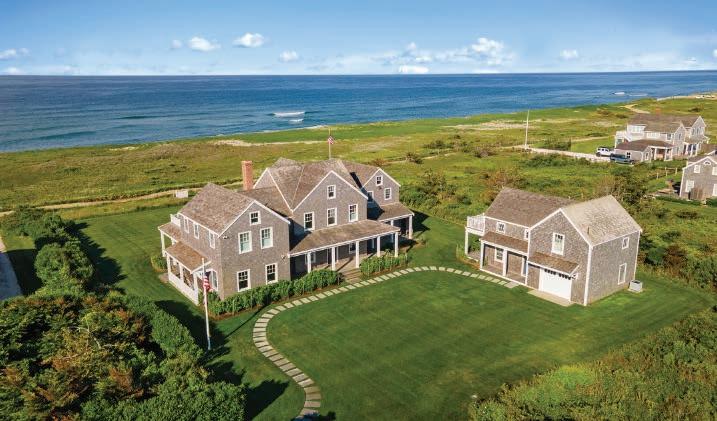
2 Marion Avenue
Cisco | 6 BR, 6/3 BA | $24,950,000 Gary Winn, Broker & Bernadette Meyer, Broker



13A&B Western Avenue
Surfside | 6 BR, 8 BA | $5,995,000
Gary Winn, Broker, Morgan Winn, Sales Associate & Susan Lazarus, Sales Associate






36 Sheep Pond Road
Madaket | 4 BR, 2 BA | $2,995,000
Gary Winn, Broker & Morgan Winn, Sales Associate


WRITTEN BY BRIAN BUSHARD PHOTOGRAPHY BY KIT NOBLE
Bobby Sabelhaus and Tom Brady were recruited in the same high school class, though the two quarterbacks went in wildly different directions.
Bobby Sabelhaus has never met Tom Brady. But he might be responsible for Brady’s rise to the NFL’s Mt. Rushmore—at least in part. This is a story 30 years in the making, starting with a single decision Sabelhaus, a Parade All-American high school quarterback, made as an 18-year-old high school senior. It turns out that without Sabelhaus, there’s a good chance Brady would not have been signed by Michigan out of high school in 1995. Without Sabelhaus, there’s a good chance Brady would
not have gone on to win seven Super Bowl titles.
“I might have a hand in one of the greatest NFL careers of all time,” said Sabelhaus, a real estate agent at Great Point Properties on Nantucket. Sabelhaus and Brady had a lot in common in the mid-’90s. Sabelhaus, a 6-foot, 5-inch, 225-pound Gatorade Player of the Year out of Baltimore, was the number-one ranked prospect in the country with nearly 6,000 passing yards to his name, a Maryland high school state record at the time.

He was a hot commodity in the college recruiting circuit. He was also Michigan’s top choice for a new quarterback. Brady, a competitive high school quarterback from California, was seen as a solid backup plan.
But Sabelhaus went down a different path. He chose coach Steve Spurrier’s Florida Gators over Michigan, leaving the Wolverines with second-pick Brady. After a rocky start, Brady turned out to be the right choice, setting single-season school records in pass attempts and completions in his first year as a starter. Sabelhaus, meanwhile, struggled as a college quarterback, ultimately transferring from school to school before giving up the game altogether.

“Coming out of high school, I was on top of the world,” Sabelhaus said. “Going to the University of Florida, I was feeling great, and then all of a sudden I started to doubt myself and get depressed and not function the way I used to. I had always had football as an escape, but I didn’t have that anymore because I wasn’t playing well, and that was a direct result of my depression.”
But this is still a success story. It’s a story about reinvention after the game that had promised Sabelhaus the world turned out not to be all it was cracked up to be. Sabelhaus bounced around from Florida to Pierce College in California to West Virginia, where he lasted less than a week. He transferred to San Jose State for his junior year but left the sport before he ever took a snap with his new team, telling his parents he was done.
Sabelhaus, who had just two years earlier been lauded by the Prep Football Report as “the biggest name to sign with Florida in quite some time,” was now nicknamed the “patron saint of recruiting busts” by Sports Illustrated
But then things turned around. Sabelhaus found a career in the film industry of all places, first cutting his teeth as an assistant at Village Roadshow Pictures, the production company behind Training Day and The Matrix franchise. He got his big break working for Richard Donner, the legendary Hollywood film director responsible for the original Superman, The Goonies and Lethal Weapon
He also worked with Donner’s wife, Lauren, for four years, producing movies like Constantine, X-Men: The Last Stand and She’s the Man. During that time, he managed to break out on his own at one point, developing projects and selling them to major studios. One of those projects was sold to Warner Bros. and New Line Cinema.
At one point, he successfully pitched a story to ESPN for its documentary series 30
“I might have a hand in one of the greatest NFL careers of all time.”
– Bobby Sabelhaus

for 30 about the legendary Baltimore high school basketball team that launched the careers of late Celtics star Reggie Lewis, as well as Reggie Williams, David Wingate and Muggsy Bogues, who at 5 feet, 3 inches remains the shortest NBA player of all time. The episode was Sabelhaus’ first experience as an independent producer.
“I’ve always had a passion for movies,” Sabelhaus said. “If I wasn’t watching football on Saturdays and Sundays with my dad, I was in my room watching Spielberg movies, watching Star Wars or Scorsese or Tarantino, some of these great filmmakers who really connected with me. I would disappear for hours because I would go to the video store, get a stack of movies and watch them.”
Sabelhaus had reinvented himself— and it wouldn’t be the last time he’d do so. After leaving Los Angeles for a new start on Nantucket, Sabelhaus landed a job at Great Point Properties selling real estate. Sabelhaus sees that reinvention as another similarity to Brady, now an announcer on Fox.

The perspective you get is that these NFL players, they end up retiring and they have to reinvent themselves, and that’s kind of like what I’ve been doing,” Sabelhaus said. “I have a new chapter on Nantucket and still feel youthful and have a lot left.
“I think about five years ago, in my head I knew the movie business was going to be in my rearview, and especially with COVID, I started thinking about what that next chapter would look like,” he continued. “My parents had always been involved in real estate on the island. I said I
love Nantucket, I know this island, I’ve been coming here my whole life, and what a dream it would be to get an opportunity to come to live on Nantucket year-round and work in real estate. I got the ball rolling and started networking.”


Looking back, Sabelhaus can joke about his connection with Brady, even though the two have never met. Sabelhaus, a longtime Baltimore Ravens fan who idolized Miami Dolphins quarterback Dan Marino as a kid, rooted for Brady during his years as a New England Patriot
“Nantucket is a new chance at love, a new chance at a career, a new chance at a place to live”
– Bobby Sabelhaus
and a Tampa Bay Buccaneer. Sabelhaus also does not live in a world of what-ifs. Football, he said, presents a small window of opportunity in college, and if you don’t succeed in that window, your prospects dwindle. That’s a fact Sabelhaus has always known.
In what turned into a prophetic interview with The Baltimore Sun in his senior year of high school, Sabelhaus acknowledged that “football is only going to take me so far, I don’t know where it’s going to take me. It could end tomorrow and then where am I going to be?”
“I’ve had second chances,” Sabelhaus said. “Now, [Nantucket] is a new chance at love, a new chance at a career, a new chance at a place to live.”
As for whether he will ever meet Brady, Sabelhaus is still hopeful.
“I would love to cross paths with him some day,” Sabelhaus said. “I think we would have a lot to talk about. We got recruited by the same college—the same guy—and had two very different experiences, but I have a ton of respect for him. The least Tom can do is buy a house from me on Nantucket.”





WRITTEN BY BRIAN BUSHARD PHOTOGRAPHY BY KIT NOBLE
The Veranda House reopens this month, nearly three years after a fire completely destroyed the historic inn.
Along the gallery wall of old black-and-white photos in the lobby of the new Veranda House, one image stands out. The shot was taken in 1881, the year island entrepreneur and eccentric inventor Nathan Chapman purchased the property as a house for him and his wife on the site of the 1684 home of mariner William Gayer, the first person to build on the lot. It happened to be the same year the Coffin family chose to throw a family reunion, bringing hundreds of family members to the island. With limited lodging options, a large group of them stayed at Chapman’s new house on Step Lane.



And like that, an idea was born. One year later, the Veranda House was open for business as a hotel. Over the next few decades, the Veranda House helped put Nantucket on the map as a tourist destination in the late 1800s and 1900s. The inn also passed through many hands. In 1901, it was purchased for just $200. In 1946, it was purchased by Jo Devine and her husband, Tom, the so-called mayor of Nantucket. They passed the torch to their son, who later handed it to his son Ethan. He held on
to it until 2006, when he sold the inn for $3 million to Susan and Dale Hamilton, who went on to sell it for $4.1 million in 2019.
Then in 2022, on an otherwise picturesque summer day, the Veranda House went up in flames, taking with it decades of history. The fire completely destroyed the inn’s iconic verandas and balconies, leaving the building a charred shell of itself. All 36 guests, along with hotel staff members, miraculously escaped the fire alive, including several guests who were saved thanks to the off-duty heroics of Nantucket Fire Department Captain Nate Barber.


In the aftermath of that devastation, after the wreckage of what was left was torn down, a new structure has emerged—one that looks strikingly familiar to the venerable inn, but with a modern interior that emphasizes safety.
“This is an absolutely brand-new modern building with the most modern

life-safety systems—the electrical work, the sprinklers, the fire suppression,” said Ralph V. Izzi Jr., vice president of corporate marketing and public affairs for the Procaccianti Companies, the real estate company that owns the Veranda House. “With that, in addition to an elevator that was installed, we’ve really taken this to be the safest property on the island.”
The new three-story inn is nearly an exact replica of the old Step Lane building that had stood in the same spot. The inn has 19 rooms, the same number as the old Veranda House. Inside those rooms are spa-like baths made with Carrara marble, subway-tiled showers and rainfall showerheads.
Guests can choose between a queen petite or a king petite, as well as a queen or king bed with balcony access, or the cream of the crop, the grand harborview king with a balcony.
“We’ve really taken this to be the safest property on the island.”
– Ralph V. Izzi Jr.
“The number-one thing we’ve received feedback on so far is how similar it looks from the outside and how that means a lot to returning guests, in terms of modern standards inside,” said Alicia Hehir, general manager of
the Nantucket Resort Collection, a subsidiary of the Procaccianti Companies that operates the hotel.
While the inn opened for a trial run during Stroll in December, the hotel’s official grand opening came in April, the culmination of months of research, discussions with historians and meetings with the Historic District Commission. Izzi said the goal was to make sure every element of the new building adhered to the design elements of the old building that burned down.
“It never crossed our minds [to build a new inn that would look completely different] because we value the importance that this property had and the historic significance that it had to the island of Nantucket,” Izzi said.


“We had our own investigation into these historical elements, and we wanted to make sure it was accurate. It wasn’t just that we thought it was right. We wanted to go back and make sure we verified that what we were doing was on the right path.”
When asked about the timing of the reopening, Izzi said the company landed on a time frame of just over two years to reopen shortly after the fire destroyed the old building and two neighboring houses. Procaccianti came within six weeks of that goal, a success considering the supply chain disruptions and unpredictable weather that often complicate new construction on Nantucket. The result, he said, will strike a chord with previous guests.
“To really identify the significant details and the meaningful details that gave the property its character before the fire, we really want to reintroduce that and reapply that to the new building,” Izzi said.

“It never crossed our minds [to build a new inn that would look different].”
– Ralph V. Izzi Jr.


















The property boasts all the upscale features expected in a high-end project. One Chester Street is a masterfully restored 18th-century ship captain’s home where historic charm meets modern luxury. Located at the edge of the historic district near Brant Point, this six-bedroom residence spans four levels and features five working fireplaces, a designer-furnished interior, and an original 6’ walk-in fireplace in the kitchen. Enjoy breathtaking harbor views from the private roof walk and entertain in the lower-level game room. Offered fully furnished for $9,750,000, this is a rare opportunity to own a piece of Nantucket history.
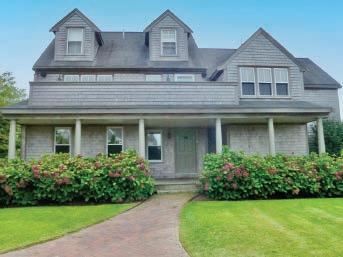
3 Chatham Road | 4 BD 4.5 BA
Offered at $4,250,000


3 Autopsoct Circle | 3 BR 2.5 BA Offered at $2,395,000
Robert Young Broker Associate 508.325.1571 l Robert.Young@raveis.com RobertYoung.raveis.com
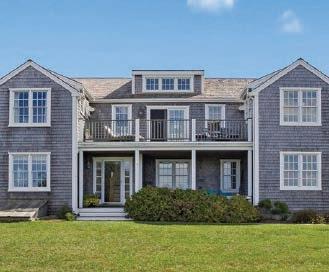
Cisco
5 Tautemo | 3 BD 3 BA Offered at $4,950,000

WRITTEN BY BRIAN BUSHARD
The 200 wind turbines off the coast of Cape May, New Jersey, were supposed to tower over the water, generating enough electricity to power more than 700,000 homes. But that project has been stopped in its tracks, and possibly for good.
It was a pair of blows in a matter of months that stopped it. The first blow: Oil giant Shell pulled out of the project, erasing a $1 billion investment it had in the wind farm. Then in March, the U.S. Environmental Protection Agency (EPA) pulled federal permits for Atlantic Shores, the two-part project off the coast of New Jersey, even though the project had already received federal approval.
The EPA’s decision marks the culmination of a months-long effort by local opposition groups and elected officials to stop the project. It also comes as offshore wind, a hallmark of the Biden administration, faces new uncertainties in a second Trump term, casting more than two dozen offshore wind projects along the Eastern Seaboard into doubt. Those blows to the Atlantic Shores project have now become a source of inspiration for ACK for Whales, a Nantucket group that’s trying to keep offshore wind farms from being constructed in the waters south of Nantucket—and they’re asking the town to join them.
“[Energy companies] know that public opposition is the number one thing that kills these projects, and when they see a concerted effort with businesses, municipalities and environmental groups all banding together and saying we don’t want this here, they say, ‘Holy crap, this is going to take a long time, we are going to be fighting a long slog of a fight,’” said Amy DiSibio, a board member of ACK for Whales.
While the focus for Nantucket has by and large been on Vineyard Wind’s 62-turbine project 15 miles south of the island, that wind farm is only one of a handful with a lease off Nantucket’s shores, a 60-plus-mile array that stretches west to the waters south of Newport, Rhode Island. Since those proposed sites lie in federal waters, Nantucket officials have maintained they have not had a say in the permitting process, save for a 2019 vote of the Conservation Commission approving a Vineyard Wind cable connecting the turbines to the mainland through Muskeget Channel.

At the time, Select Board members were advised by town counsel to support the project, structuring a deal—a good neighbor agreement—with Vineyard Wind to mitigate its visual effects. Vineyard Wind agreed to paint its turbines offwhite and install a type of nighttime lighting that would only go off when planes were overhead (Vineyard Wind only began testing its aircraft detection lighting system in February). The town—as well as cosigners the Maria Mitchell Association and Nantucket Preservation Trust—secured $16 million through that deal in exchange for support of the project.
fire last summer because of a collapsed blade that left fiberglass and styrofoam particles scattered across Nantucket’s south shore, a group of residents and some town officials are now wrestling with the idea of exiting the good neighbor agreement.

“What I think we’ve come to realize is that the impacts outweigh any financials.”
– Dawn Hill Holdgate
“If that whole lease area gets built out, what Nantucket needs is a huge seat at the table,” ACK for Whales board member Veronica Bonnet said.
“Just because you’re a proponent of offshore wind doesn’t mean you should be putting your head in the sand about the impacts of it. All energy has an impact. This isn’t a little fairytale where we get to build windmills off Nantucket and everything is great. This is a massive amount of power in the hopes of supplying electricity to millions of homes in New England. If that’s what you’re a proponent of, then you ought to be a proponent of getting out of the good neighbor agreement and into an agreement that protects Nantucket from a massive power plant.”
a lightning strike on the same turbine over the winter. At a heated Select Board meeting in February, she argued the community had been misled about the visual and environmental impacts of the project when it was proposed. Vineyard Wind did not return N Magazine’s request for comment.
“What I think we have come to realize is that the impacts outweigh any financials,” Hill Holdgate said. “It really doesn’t matter what the dollar figure is. It was very misleading what we were told in 2020. The impacts are far greater visually, and now we know the environmental impacts are more significant.”
Five years later, and in the wake of the project coming under
Dawn Hill Holdgate, one of two Select Board members who were on the board in 2020 when the agreement was signed, believes Vineyard Wind already broke the terms of the agreement when it waited three days to inform town officials about the broken blade last summer. She felt the same way after a two-day delay in communication to the town after
Just days into his second term in office, President Donald Trump released an executive order slamming the brakes on offshore wind, halting new federal leases and setting the stage to potentially amend or terminate existing offshore wind leases like Vineyard Wind or SouthCoast Wind off Nantucket, pending a federal review by the Department of the Interior. SouthCoast’s plan calls for 141 turbines standing over 1,000 feet tall, taller than Vineyard Wind’s 850-foot turbines.
“My preference would be for the entire project to stop. I am hopeful these other projects will be stopped or delayed with the new administration,” Hill Holdgate said. The town in March appealed the federal approval of SouthCoast Wind, citing an alleged failure to
protect the island’s status as a national historic landmark and a failure to “take a hard look at environmental impacts.”
But a federal delay in the rollout of offshore wind has some state and federal officials on edge. “There’s a need for offshore wind,” Rep. Bill Keating, a Democratic Congressman representing Nantucket, said.
That need stems from a state comprehensive energy plan developed during Gov. Charlie Baker’s administration, when Plymouth’s Pilgrim Nuclear Power Station was decommissioned, leaving Massachusetts reliant on imported natural gas. The state has explored hydropower through a transmission project from Canada to Maine, though the recent federal trade war with Canada has Keating worried that option would see state ratepayers paying a fortune for energy. Purchasing natural gas is another option, though Keating said that too would be “enormously expensive and volatile.”
“What was initially a project in offshore wind that focused on the need for alternative and renewable energy became part of our plan to get the power that we need,” Keating said. “We’re in a very precarious spot where we live. We’re at the end of the line in terms of energy sources.”


Democratic State Sen. Julian Cyr, who represents Nantucket on Beacon Hill, agreed with Keating. The conversation around wind energy, he argued, should start with electricity costs, which he said have become “astronomical on Cape and Islands” because of the state’s reliance on natural gas. As of January 2025, Massachusetts
consumers pay the fourth highest price for electricity in the country (30.08 cents per kilowatt hour), only behind Rhode Island, California and Hawaii, according to data from the Energy Information Administration. Cyr has been consistent in his criticism of Vineyard Wind’s communication following the blade failure— which led to a federal suspension on the project and which GE Vernova attributed to a “manufacturing deviation” at a Canadian factory where the blades were

made. But Cyr also argued the blade failure should not be cause to walk away from offshore wind altogether.
“Offshore wind is a critical source for the electric grid for Massachusetts and New England,” Cyr said. “We’re an importer of our energy and that’s a part of why our energy costs are so high, and that burden falls to our residents.”
According to Vineyard Wind, the 800-megawatt offshore project has the capacity to generate energy for more than 400,000 homes and businesses in the state, reducing carbon emissions by an estimated 1.6 million tons per year. Offshore wind proponents have long touted the alternative energy source’s ability to reduce Americans’ carbon footprint, a major policy goal of the Biden administration. That goal: 30 gigawatts of offshore wind energy by 2030, or enough to power 5.25 million homes.
such as sea-level rise. “Islanders have seen and are not happy about the adverse consequences of a single blade failure,” Cyr said. “The prospect of drilling off our shores for natural gas could truly present catastrophic consequences for our shores, let alone only furthering the climate crisis.”
“In the end, people really aren’t focusing on the impacts, and the trade-off just isn’t there.”
– Amy DiSibio
What offshore proponents and some opponents seem to agree on is the importance of transitioning away from traditional greenhouse gases. Congressman Jeff Van Drew, a Republican from New Jersey and one of the most outspoken critics of offshore wind on Capitol Hill, even said he was in favor of renewable energy, though his preference is for solar—as well as nuclear—energy.
“This has been a great opportunity to monetize the global push for the panacea for climate change,” DiSibio said. “It’s politically popular to talk about it, but in the end, people really aren’t focusing on the impacts, and the trade-off just isn’t there.”
But without offshore wind, some officials worry Americans’ reliance on fossil fuels will only accelerate, exacerbating both pollution and the negative impacts of climate change
Several offshore wind projects down the Eastern Seaboard have begun construction. In addition to Vineyard Wind’s 62 turbines, other projects include the 12-turbine South Fork Wind Farm south of Rhode Island, the Block Island Wind Farm and Coastal Virginia Offshore Wind, a pilot project consisting of two turbines with plans for 174 more. In total, 36 offshore wind projects have secured federal leases off the East Coast from Maine to South Carolina.
Just south of Vineyard Wind is another proposed project called New England Wind, a planned 129-turbine wind farm 24 miles southwest of Nantucket. ACK for Whales is challenging that project as well, asking the Select Board to sign on as a co-plaintiff. In March, the group petitioned the EPA to review its Clean Air Act permits for New England Wind, the same permits that were pulled for Atlantic Shores off the coast of New Jersey. It’s not the group’s first legal challenge.
ACK for Whales had also sued to stop the Vineyard Wind project,
taking its case all the way to the U.S. Supreme Court, though the nation’s highest court declined to hear the case. In March, the group launched a new challenge against Vineyard Wind through the EPA, seeking to revoke its Clean Air Act permit.
“The missing link is we want the Select Board,” DiSibio said. “If the town and county of Nantucket push back on this, then everything is a lot stronger.”
Matt Fee, who serves as the Select Board’s vice chair, said the board is considering all of its options when it comes to the good neighbor agreement. The Maria Mitchell Association exited the agreement last fall. At the same time, over 150 businesses have signed a petition urging the Select Board to withdraw from the deal.
Besides that agreement, the Select Board has also asked islanders to lobby state and federal preservation authorities over mitigation for SouthCoast Wind, and has publicly objected to a proposed mitigation plan from SouthCoast that would have seen the town receive $150,000 in mitigation funding—a drop in the bucket of the good neighbor agreement’s $16 million, and a number Hill Holdgate called a joke.
“We have greater leverage now because
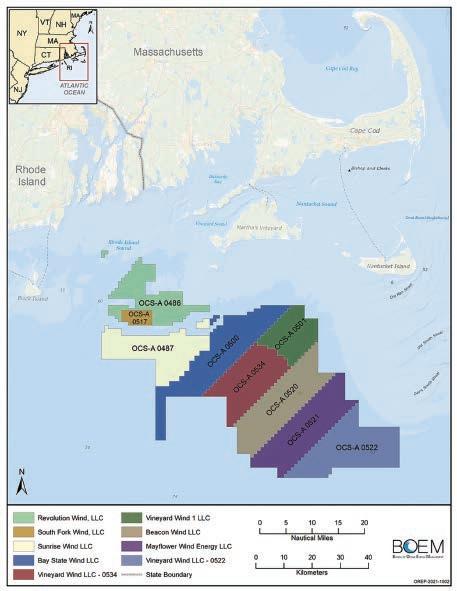

[Vineyard Wind] is in breach of the agreement in my mind,” Hill Holdgate said. “We have seen further unintended consequences with the blade failure, the debris, the impact on summer tourism and local businesses, and now leaving it the way they have since last summer, it’s been allowed to be hit by lightning causing further issues. We are in a position to do a lot more about it now, but it’s still an uphill battle.”
























































WRITTEN BY GRETA FEENEY
PHOTOGRAPHY BY KIT NOBLE
Each month, beneath Nantucket’s legendary dark skies, the new moon arrives—fully present and yet unseen, a threshold between past and future. Like the new moon itself, women who have journeyed through darkness often discover and recover their fullest selves by illuminating what once lay hidden. Nantucket’s NEW Moon Fest celebrates women filmmakers who courageously step from the shadows into the transformative light of storytelling.
With its celebrated history of strong, independent women, Nantucket is a natural home for a female-led film festival. For centuries, island women have shaped businesses, households and community affairs—a legacy of resilience and self-determination that enriches contemporary women’s narratives.
Launched by NCTV in 2024, the NEW Moon Fest—Nantucket Empowering Women—builds on this tradition, celebrating the wild woman archetype and the fierce, intuitive and creative essence within every woman. Hosted at the iconic Siasconset Casino, the festival showcases the works of women

storytellers from around the world, honoring their creativity, perseverance, strength and power of voice.
“This is medicine—soul medicine,” said Director of Programming Stephanie Serra, who as a filmmaker herself is a passionate advocate for the transformative power of storytelling through film. “I see myself as a curator in the Latin sense—to curate is to cure. This is about the healing of souls.”
Through her work, Serra selects films that confront complex and often uncomfortable realities— from cultural traditions surrounding female genital mutilation to the struggles of incarcerated women and survivors of sexual assault and domestic violence— as well as the evolving challenges all women face throughout the different stages of their lives. Serra seeks to showcase transformation, understanding and healing through the power of film.
“NEW Moon Fest will explore what our personal powers are, the places in which women have become powerless, and advocate for the strength of our voices,” she said.


The inaugural NEW Moon Fest in 2024 received film submissions from 17 countries. For the 2025 festival, to be held May 24, that number has grown to 22, reflecting the festival’s expanding reach and its commitment to amplifying women’s voices worldwide.
With awards categories such as Most Empowering Film, The Wild Woman Award and The Grey Lady Award, the festival highlights bold and resonant storytelling. The 2024 official selections ranged from a coming-of-age film exploring Black British girlhood to a documentary following female inmates as they underwent transformative voice work. These films challenge and inspire audiences to hold space for diverse women’s experiences.
British actress Busayo Ige, who wrote Essex Girls, won last year’s Best Director award. Her film draws from her experience as a young woman of Nigerian descent growing up in a predominantly white English neighborhood. Through authentic portrayals of young Black women like herself, she aims to empower and inspire newfound confidence in others.
“This film gives girls like me—who grew up in environments where hardly anyone else looks like them—the chance to see their experiences reflected on screen,” she said. “I channeled my own experience into something universal: What is it like to be a Black girl in an almost entirely white space, and how does it shape self-acceptance?”
The Girl Inside, a mini-documentary in the 2024 festival by Kate Bryan, film creator and host of the 1 Girl Revolution podcast, follows female inmates in Chicago’s Cook County Jail—a facility heavily criticized for overcrowding, violence and inadequate mental health care. The short documentary follows detainees unable to afford bail as they await trial, without having been convicted, as they participate in the academic course
“Storytelling as a Healing Art,” taught by interdisciplinary voice artist and teacher Dr. Laura Biagi. Through vocal exercises designed to release grief and uncover hidden trauma, students reconnect with their authentic selves.


Biagi encourages them to explore what their own voices have to reveal, prompting them to respond to a profound statement: “I am your voice, and this is what I want you to know.”
Selected as Most Empowering Film, The Girl Inside amplifies a story about women whose voices often go unheard. “There are many issues in the world because people are not able to be heard,” said Bryan. “Our voices are our revolution, and we must seek opportunities to speak up for those who are forgotten and to elevate voices that are too often ignored. Above all, we need to listen. We have the

power to change the world through our lives, and if we truly believed that, the world would look so different.”
This year, the NEW Moon Fest highlights include films like Barricade, a psychological exploration by London-based writerdirector Alice Johannessen. The film delves into the lasting impact of a teen sexual assault on a school bus and how societal norms—especially the “boys will be boys” mentality—diminish the victim’s personhood by framing such violations as everyday occurrences. Johannessen—whose films are shown throughout
the U.K. to educate teachers and students about sexual violence—believes that by dismissing a passing moment of impropriety, or quickly labeling it as unremarkable, such abuse is allowed to take root and cause serious damage.
“This is medicine, soul medicine.”
– Stephanie Serra
“Our aim with Barricade was to make a film that immersed audiences in the feelings teenage girls experience on an average school day,” Johannessen said. “The insecurity, rage, euphoria, blood, sweat and tears. To ask what happens when all these feelings can no longer be contained? Where do they go when an institution

WE SHOULD ALL BE FUTURISTS
AngelaNorelli(Italy)
WHY NOT NOW
RileyHooper(U.S.)
MY JUMPER, IT ROARS
IsabellaSpagnolo(Australia)
WE DID NOT CONSENT
DorothyAllen-Pickard(U.K.)
BARRICADE
Alice Johannessen (U.K.)
ON A SUNDAY AT ELEVEN
Alicia K. Harris (Canada)
FORGET ME NOT NüeschSisters(U.K./Germany)
JELLYFISH AND LOBSTER
Yasmin Afifi (U.K.)
repeatedly fails to find a space or outlet for them? By ending the story with a moment of intense catharsis, I hope audiences will consider why this is such a rarity for survivors and victims.”
Another standout in the 2025 lineup is We Did Not Consent, an 18-minute short film directed by Dorothy Allen-Pickard that explores the U.K.’s “spy cops” scandal. For over 50 years, a secret unit within London’s Metropolitan Police infiltrated activist groups, luring women into false romantic relationships.
“This film gives girls like me... the chance to see their experiences reflected on screen.”
– Busayo Ige
In the film, three of these women reclaim their narratives by reenacting and directing scenes from their pasts. Wearing theatrical masks to protect their identities, they use the creative process to confront and communicate their trauma. Allen-Pickard emphasizes the importance of allowing the women to control their stories—to “find a method where these reductive versions of their life stories could play out and the women could interrupt and redirect them to reveal something that was more true to them.” This transformation of deep psychic wounds into truth and healing embodies the very essence of the NEW Moon Fest.
These deeply personal and culturally resonant films give rise to the wild woman’s voice—unfiltered, courageous and transformative. Suspended in the moment between darkness and renewal, we reclaim our stories and rewrite our futures. As Dr. Clarissa Pinkola Estés, the author of Women Who Run with the Wolves, reminds us: “Creativity is meant to be an act of clear consciousness…or else all comes to nothing.”








WRITTEN BY LARRY LINDNER
Landscaping that’s both eco-friendly and beautiful

When Polpis resident Will Kinsella learned that mowing his 12-acre lawn was the carbon-spewing equivalent of driving all the way from Nantucket to California, he stopped mowing. He let his land go to seed—literally.
“I collected seed heads on the property that were native to Nantucket using a plant identifier app called PictureThis, mixed them with some topsoil, and then just kind of scratched the area and hand-broadcasted the seeds,” Kinsella said.
By the next summer, his land was lush with native Nantucket flowers that finally escaped being mowed down before they could bloom—wild geraniums, bog violets and asters among them. There were also the tall grasses he had planted, which grew alongside other native grasses no longer threatened by the lawn mower’s blades. “The wavelike sway and swish of the grasses in the breeze is magical,” he said.
Kinsella is one of a growing number of Nantucket property owners who are ditching their lawns and the so-called rose and hydrangea monoculture for more eco-friendly gardens that are no less lovely to look at. The Nantucket Land and Water Council is all for the shift—so much so that it has started an initiative called Grow Native for Nantucket, a program designed to help islanders swap out traditional grass and non-native plants for indigenous species that are better for the environment.
Non-native plants typically require more pesticides and herbicides that can be harmful to pets and people. Nutrients from those pesticides and herbicides can also seep into groundwater and eventually to Nantucket’s harbors and the ocean, where they harm marine life. Native plants, on the other hand, often don’t require as much water to thrive because their long roots allow them to take up water from deeper in the ground.
A conventional lawn requires roughly 100 gallons of water for every 1,000 square feet on a hot summer day, according to Rita Higgins of Wilder Designs Studio, who along with Julie Wood of the landscaping firm Hither Creek Gardener helped Kinsella plan his meadowland. “A meadow just needs water to establish it and then zero inputs for fertilizer, herbicides and pesticides,” Higgins said.
Those same long roots have other benefits as well. They can bolster coastal resilience by strengthening a coastal area to combat erosion. They also encourage habitat diversity. This becomes abundantly clear at Peter Kellner’s own meadow landscape in Quidnet, a sprawling landscape where elementary school children from the Nantucket Lighthouse School visit on field trips to learn about pollinating species that feed on the island’s native plants and grasses. Those pollinators were largely missing from Kellner’s property before he converted one of his six acres of green lawn into a meadow.


It’s not just that Kellner now gets to see more butterflies, hummingbirds and bees (enough for him to have an apiary that produces what he calls “fantastic honey”). He also enjoys the aesthetic of the meadow itself. “I hate lawns that look like they’re a golf course,” he said. “Nantucket was never meant to be suburbia.”
Emily Molden, the executive director of the Nantucket Land and Water Council, points out that with eco-friendly landscaping, residents can still manicure spaces and keep their lawns. But at the same time, they can reduce the size of their laws and promote biodiversity. “It’s


not all or nothing,” she said. Higgins agreed. “There is room for hydrangeas and roses in an ecological landscape,” she said. “But even just moving hydrangea bushes to a spot where they would require less water would help.”

“People love a tidy garden. But as they see the increase in bird and butterfly activity, their perspective on what’s beautiful changes.”


Island resident Susan Burke, an expert gardener, believes in an integrated approach as well. “We planted the bank with natives,” she said, crediting her grandmother for her interest in preserving the environment by making her learn the difference between native and non-native plants when she was a girl. But other parts of her property are more of a mixture. “If it were all ecological, that would be boring,” she said. “In the summer, you want some perky annuals to come in.”
Julie Jordin, a landscape designer on the island who helped Burke create more eco-friendly landscapes while keeping them beautiful, said her design mantra is that around the house or in special spaces, it’s fine
to plant non-native species. But as you move farther from the house, she said it really should be two-thirds for the birds. Surrounding a property line with privet hedges isn’t going to do it, she added. Instead, there are native plants that act like privet but require less maintenance.
Those who are thinking of growing native should keep in mind that an eco-friendly garden has a wilder aesthetic, as Higgins puts it.
“It becomes more about exerting less control over the land with water and chemicals, and inviting a willingness to let things evolve the way they want to,” she said. “People love a tidy garden, but as they see the increase in bird and butterfly activity, their perspective on what’s beautiful changes.”
For resources and tips on how to get started on an eco-friendly garden, visit nantucketlandandwater.org. The Nantucket Land & Water Council will also feature landscape architect Edwina von Gal at its August 5 annual meeting.













WRITTEN BY BRIAN BUSHARD
Doug Lindley, one of only a handful of remaining bluefin tuna spotter pilots, is featured in the Discovery Channel series Harpoon Hunters.



Doug Lindley is one of a dying breed of pilots.
Fifty miles northeast of Nantucket, Lindley spots what appears to be a disturbance in the water. Sitting some 800 feet overhead in his 1968 Piper PA-18 Super Cub single-propeller plane known as 44 Zulu, Lindley is looking at what could be a whale, a flock of gulls, a school of baitfish or, possibly, the wake from a school of coveted bluefin tuna.
Lindley signals to his captain, Mattapoisett Select Board member and 40-year harpoon fisherman Tyler Macallister, to go in for the strike as swiftly as possible. Too slow, and they’ll miss the fish. Too fast, and the tuna will be spooked into deeper waters where they’re harder to spot.
Lindley and Macallister are part of a dwindling group of fishermen carrying on the tradition of harpoon tuna fishing, a method that’s earned a reputation as one of the most challenging—and also one of the cleanest—ways to catch a fish. They are also stars of the Discovery Channel’s new series Harpoon Hunters.
“There’s probably six of us left,” Lindley said about harpoon tuna fishing spotter pilots. “There used to be 30 or 40 of us when it was really worthwhile, and most of them were swordfish guys. It’s become kind of a lost art.”

Harpoon tuna fishing works when everything goes right. The bluefin season only lasts a matter of weeks in the summer, so anyone involved needs to make the most of it. With the legal limit set at five fish per day, captains best be sure they catch enough to afford the immense cost of a boat, a crew, repairs and fuel to take them into the channels where bluefin hunt for food. With so much on the line—and with bluefins that fetch prices upward of $10,000—most captains hire spotters.
“The plane is an extension of the boat,” said Macallister, captain of the Cynthia C.2 harpooning vessel that partners with Lindley. “You have an 800-foot tower that can move at 70 knots and cover the ocean. Doug can see the fish deeper in the water column than I can. Once he sees them, he can hold them and keep an
eye on them until they come back up.”
Lindley has always looked to the skies. His father was a World War II fighter pilot in the South Pacific. Lindley has also been fishing for decades. He was a professional sportfishing boat captain for 30 years, but at some point along the way, he realized he was more interested in a bird’s-eye view of the ocean than the view from the captain’s seat. Years earlier, one of Lindley’s friends teased the idea of going out for a pilot’s license, even saying he would pay for it. That was 1980. The friend lost interest, but Lindley stuck with it, even when it meant six-plus hours looking for signs of fish.
“You’re looking for birds and whales and big schools of bait, and the tuna fish you can see on the surface,” he said. “You see huge schools of
“There’s probably six of us [bluefin tuna spotter pilots] left...it’s become kind of a lost art.”
– Doug Lindley


them, they make a tremendous wake. From the plane on a calm day you can see them from miles away if it’s a big school. We call it nervous water, when they’re upsetting the water like that.”
“
You have an 800-foot tower that can move at 70 knots and cover the ocean. Doug can see the fish deeper into the water column than I can.”
– Tyler Macallister
Harpoon Hunters debuted on the Discovery Channel in January. To film the show, producers attached four cameras to Lindley’s plane, which he keeps at a hangar at Nantucket Memorial Airport. Once the bluefins are spotted and the boats close in, the show’s producers launch drones to capture the catch.
The show focuses as much on the tradition of the industry as it does on the rivalries and infighting that ostensibly divide its members, though Lindley said the real story is a bit different. Still, he understands the need for dramatics. “We all work together, and for the most part we’re all good friends and help each other out,” he said. “We’ll travel out together in case someone gets in trouble.”
The Discovery Channel was looking for a followup to Deadliest Catch, its 20-season Alaskan crab fishing series that became so popular it even survived the collapse
of the crab population in the waters where it was filmed.
Discovery also happens to be vying for an audience during a proliferation of dating shows that pit strangers against each other, hence the dramatics. The first episode of Harpoon Hunters landed 670,000 viewers, Lindley said, outpacing Discovery’s goal of 500,000.
With that kind of audience, Lindley hopes the show will give viewers insight into the abundance of bluefin tuna in the Atlantic, something that has not always been the case. He has seen the rise and fall—and now the resurgence—of bluefin tuna numbers first-hand.
According to the World Wildlife Fund, bluefin populations in the Atlantic and Pacific have dwindled severely due to overfishing, though regulations like the five-fish per day limit have been put in place with the intention of preserving the fishery.
“I got to see the heyday and I saw the decline,” he said. “Everybody cried about the regulations, but it’s one of the few fisheries where the regulations have worked the way they wanted it to.”
Lindley has also seen the cost of doing business rise as the fishery has waned. If he doesn’t make $600 per day— the cost of flying his plane around Nantucket and the Cape— he said it’s not worth it. While his crews have had $20,000 days in the past, Lindley has also gone as long as 17 days without a catch, leaving him counting on a few incredible days to recoup his losses.
“It used to be that you could walk on them,” he said. “In the late ’70s, early ’80s, they started to become worth more money. The Japanese market developed. Before that, it was sold for cat food, but then the Japanese market developed and it became a delicacy over there. Everyone jumped on the bandwagon. There was a lot of money in it and they were overfished. In recent years with the regulations and putting limitations on them and so on, the fish have come back huge.”


“The plane is an extension of the boat.”
– Tyler Macallister

Urgent Access at Nantucket Cottage Hospital provides walk-in medical care for non-life-threatening conditions.

Urgent Access is located in the Anderson Building on the hospital campus at 57 Prospect Street. Visit nantuckethospital.org/urgentaccess for hours and more information.


WRITTEN BY DAVID CREED
Nantucket
AND DAVID CREED
faces a pivotal vote on the future of the Our Island Home nursing facility this spring.
orman Gauvin came to Nantucket in 1962 when he was stationed at Coast Guard Station Brant Point. When Our Island Home was built nearly two decades later at its current location on East Creek Road, he remembers looking at the nursing home with contempt. “We used to look across from the tower to this place thinking, ‘Oh my God, I am never going there,’” Gauvin said. “Now sure as s**t, here I am.”
In February, Gauvin suffered a fall in his home that caused him to break his arm. He was transported to Nantucket Cottage Hospital, where he stayed for five days before he was told he would need physical therapy. That led him to Our Island Home, where he stayed for six weeks.
“Nantucket needs this place,” Gauvin said. “We all say we’re not going to come here but we all grow old. If that day comes, it wouldn’t be fair to send us to the Cape or to go to Boston,
right? We want to stay home. We’re here on the island. This is our home.”
But the building is deteriorating. Our Island Home now faces a consequential vote at the May 3 Annual Town Meeting: a $100 million appropriation for a new 60,000-square-foot, 45-bed nursing facility at the Sherburne Commons campus off South Shore Road. If approved, the new facility—the only municipally run nursing home in the state—would then need to secure voter approval in the town election on May 20.
“If you start from the position that we’re going to take care of this segment of our community, then this is the right project,” Finance Committee member Chris Glowacki said during a February meeting. “The appropriate diligence has been done. One hundred million dollars is a big number, but that’s what it costs to build a facility like this.”

Since 1994, some 883 people have called Our Island Home their home, according to Our Island Home administrator Peter Holden, while 98% of its residents have been islanders with families on Nantucket. Holden said when you consider the family members and friends who benefit from keeping their loved ones on-island, thousands have benefited from the facility’s services over its 45-year existence.
Some, like Gauvin, are temporary stays, while others depend on the facility as a permanent home. Phil Gallagher is one of those residents who found himself in sudden need of the facility after suffering a stroke 18 months ago.
“I am physically and mentally not capable of doing what I used to be able to do,” Gallagher, a retired health insurance director, said. “I was in public health for 50 years and I love what I see here. The staff is great. I don’t know what I came in here expecting, but I now know that I cannot live totally on my own like I used to. My body and my brain are not suited to be an independent person. That can happen to everyone.”
The Finance Committee endorsed the proposal for a new facility in February by a 6-3 vote. Peter Schaeffer, one of the six committee members to approve the proposal, said that the town has plans to convert the East Creek Road property into a new senior center, which will preserve the harbor view that the community has been hesitant about giving up in previous appropriation requests for a new nursing home.
“In reality, this building cannot be repurposed, and it was not built well to begin with,” Schaeffer said. “It’s held up over these years, but it’s not a building that we can say if we paint it and put some new walls up, everything’s going to be fine.”
The new facility would include enclosed courtyards and solar panels. Some rooms would be large enough to allow for the addition of a second bed should Our Island Home need to

increase capacity. Still, it’s an expensive investment. “This is a very expensive operation,” committee member Joseph Wright said during February’s meeting. “In a perfect world, you would do everything for everybody, but the world isn’t perfect, and the question is whether you can afford it.”
Jim Richard grew up on Nantucket and is a U.S. Marine Corps veteran. He checked his father into Our Island Home decades ago after his father received inadequate care offisland at another nursing facility. Richard said once his father arrived at Our Island Home, he was up walking around at the age of 97, dusting the walls just three days after being bedridden at his former nursing facility. Fastforward to this year and Richard himself needed to be checked into Our Island Home for eight weeks


place at any time.”
“Society lives and thrives through its seniors,” Richard continued. “That has been proven throughout history that if you take care of your seniors, your society will be successful.”
Bart Cosgrove took care of his husband, Thom, for as long as he could until late December of 2024. Cosgrove said it became too much for him to do on his own after Thom began to fall more frequently and had reached a point where he couldn’t remember who Cosgrove was. His husband lived at Our Island Home for a few months before passing away.
“I think we have an obligation not to turn our backs on the seniors here,” Cosgrove said. “I had mixed feelings about deciding I couldn’t take care of Thom the way he needed to be. It wasn’t until I was here that I realized while not under the best circumstances, they do an incredible job here.”


Others, such as Nina Liddle, turned to Our Island Home to take care of their mothers. Liddle is a business owner on the island and said her mother has been at the island home for about two years. She said keeping people on-island is important to combat loneliness and improve quality of life for seniors. “It’s so important that these people see their families or their friends,” Liddle said. “Isolation is one of the worst things in the world to do to an elderly person.”
“Society lives and thrives through its seniors.”
– Jim Richard
following the amputation of one of his big toes due to complications from diabetes. He needed to complete eight weeks of physical therapy.
“Everybody always used to think back when I was a kid growing up here that this was the old folks home where you came to die,” Richard said. “That couldn’t be further from the truth. Anybody could end up needing this
Pat Newton, who has been a resident at Our Island Home for almost three years, said she hopes voters will try to think about how they would feel about needing to leave the island in the latter stages of their lives if a nursing home no longer exists on Nantucket.
“People who are voting for this of course are younger for the most part, but they probably don’t know that at some point they may need the nursing home,” Newton said. “Do they want to go off-island to be a resident in the nursing home, or would they like to have their family and their loved ones be able to visit them right around the corner?”






Cliff | 8 Bedrooms | 8 Full, 3 Half Bathrooms | $22,500,000
This distinguished estate lies in Nantucket’s prestigious Cliff neighborhood, offering exceptional privacy on nearly half an acre. Masterfully crafted by the esteemed Hehir Group, the property comprises a main residence, guest cottage, and garage studio, gracefully arranged around a heated pool, spa, and sauna, framed by beautiful landscaping and fieldstone walls.
The main house, updated in 2022, features 5 bedrooms, 4 full baths, and 3 half baths across 5,572 sq. ft. of refined living space. The guest cottage offers 2 bedrooms and 3 full baths within 2,360 sq. ft., providing elegant, self-contained accommodations. The garage studio includes 572 sq. ft. of finished space with a full bath, ideal for additional living or workspace, along with a 600+ sq. ft. garage for vehicles and seasonal storage.
Offering a roof walk with harbor views, seamless indoor-outdoor flow, and a prime location within close proximity to Steps Beach and historic downtown Nantucket, this exceptional property is as convenient as it is captivating. With over 1,500 square feet of remaining ground cover, there’s ample opportunity to expand and customize. A rare chance to own a premier Nantucket retreat that effortlessly combines classic coastal charm with modern luxury.



On Wednesdays, a group of musicians plays Irish jigs at Kitty Murtagh’s, carrying on a tradition of Celtic sessions.
“It’s one of the things we’re missing in our modern world, the connection of community.”
– Meg Glidden
The part-time musicians who take a seat at Kitty Murtagh’s on Wednesday nights are not looking for the spotlight. For that matter, they’re not even looking for a paycheck from the bar. Instead, the group has found a place where it can meet regularly to play traditional Irish music, more as a way to jam and build community around a common language of music than to show off their talents— though there’s no denying they are talented. For nearly eight years, they’ve met almost every week to perform together in some capacity. They have met at different venues, with members rotating from week to week. Even at Kitty Murtagh’s— where they’ve performed since 2023—some group members take breaks during the performance for a bite to eat. Some grab a Guinness.
“It’s one of the things we’re missing in our
modern world, the connection of community,” said Meg Glidden, a teacher at the Nantucket Lighthouse School who has been playing in these Celtic sessions for five years. “I missed one week, and when I came back the next week, everybody clapped. Everybody can join, there’s nothing exclusive. Everyone can be there, that’s how music is.”
The Celtic Slow Sessions, as these impromptu gatherings are called, are organized by the Nantucket Community Music Center under de facto band leader Graeme Durovich. When the musicians are not playing a Wednesday session at Kitty Murtagh’s, they can be found at the Music Center on Centre Street.
Irish music has a rich history on Nantucket. John Keane, the owner of Kitty Murtagh’s, Town and Queequeg’s, has hosted a number of Irish musicians, including Cork County native Sean Cunningham and



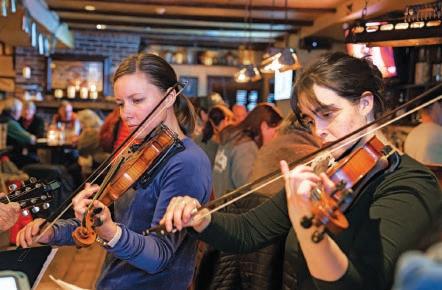

his rock band Sunday’s Well, which covers ’70s and ’80s rock and punk songs by bands like Thin Lizzy and The Pogues, and U2 cover band Joshua Tree, which went on to perform several gigs at The Chicken Box. “It wasn’t iddly-diddly Irish music,” Keane said.
Traditional Irish music like the tunes played during the Celtic Slow Sessions has also had a long presence on the island, whether by way of performances at the Whaling Museum by American troubadour Bill Schustik or jams organized by the late Henry Varian, an Irish immigrant to Nantucket via Boston known fondly to Keane as an “ambassador for music.”
“[The Celtic Slow Sessions] started out as a group of musicians getting together and jamming. They wanted a place where they could all get together,” Keane said of the Wednesday night performances at Kitty Murtagh’s. “It’s worked out well. People enjoy it. You might not be going there to dance, but I feel as much as the house benefits from it, they benefit from it because it’s a venue and they get to have a good time.”
Peter Lochtefeld joined the group two years ago. At the time, he did not know much about Celtic music. But he was intrigued, and the songs sounded familiar. Lochtefeld’s father, artist John Lochtefeld, grew up in West Virginia playing what Peter referred to as “old folk songs that no one knows anymore.” When Peter joined the group at the Music Center, he said it was “like the wheel coming back around.” He’s since played sessions across the state. He’s attended sessions in Spain and in Amsterdam.
“You walk in and it’s really, really nice to have a group of people to play together because there’s a canon of songs that everyone knows,” he said. “I’m starting to finally get to know about half the stuff they play, which is great. People can come in and play and jump in and come and go. They don’t all go there for the beer, they go for the music and the camaraderie. This group is made up of all ages. It’s nice to have people come.”
“
You walk in and it’s really, really nice to have a group of people to play together because there’s a canon of songs that everyone knows.”
– Peter Lochtefeld


Lochtefeld is one of several guitar players in the group. Others play the viola, fiddle, flute, oboe, mandolin, bass, banjo or an Irish string instrument resembling a long-necked mandolin called a bouzouki. Glidden, a trained flutist, pivoted to the penny whistle during the pandemic. She’s started memorizing a few pieces, “The Irish Washerwoman” being a favorite.
When she’s playing, it’s not to solo, but to play along to a melody. There are no solo instruments in the session. In other words, she said, there’s no place where one person is showing off.
“The group is very connected, very kind,” Glidden said. “When we play at Kittys, anyone can show up with an instrument and join in. There’s a real open sense of community with the group.”
The Celtic Slow Sessions group meets from 6 p.m. to 8 p.m. on the second Wednesday of each month at Kitty Murtagh’s and is open to the public at the Music Center for a $50 yearly membership.




PHOTOGRAPHER: BRIAN SAGER
EDITORIAL STYLIST: PETRA HOFFMANN
STYLE ASSISTANT : MORIAH SCHARN
PHOTO ASSISTANT: REECE NELSON
HAIR STYLING: THE COUPE NANTUCKET
MAKEUP STYLING: JURGITA BUDAITE OF ISLAND GLOW
VENUE: THE WESTMOOR CLUB
MAGGIE INC. MODELS: FEMALE MODEL: HAN KELLEHER
MALE MODEL: MICHAEL JOHN GROSS

HER TOP AND PANTS: VERONICA BEARD JEWELRY: SUSAN LISTER LOCKE BAG: CENTRE POINTE SUNGLASSES: THE VAULT HIM SHIRT: SOUTHERN TIDE PANTS AND BELT: DUCK HEAD JACKET AND SUNGLASSES: MURRAY’S TOGGERY SHOP
JACKET AND SHORTS: SARA CAMPBELL
SHIRT: SOUTHERN TIDE
EARRINGS: CALISTA WEST
DIAMOND NECKLACES: THE VAULT
EMERALD NECKLACE: KATHERINE GROVER

HER DRESS: CARTOLINA X CENTRE POINTE
EARRINGS, RINGS, NECKLACE:
KATHERINE GROVER
BRACELET AND SUNGLASSES: THE VAULT

RINGS:
HER TOP, PANTS, AND SNEAKERS: MURRAY’S TOGGERY SHOP
BLAZER: SARA CAMPBELL
HEART NECKLACE & BRACELET: THE VAULT
EARRINGS, DISC NECKLACE, AND RINGS: CALISTA WEST
BAG: CENTRE POINTE
HIM
SHIRT AND SHORTS: SOUTHERN TIDE
PICKLEBALL PADDLE: SOUTHERN TIDE
WATCH: MURRAY’S TOGGERY SHOP


SHIRT AND PANTS: SOUTHERN TIDE
JEWELRY: KATHERINE GROVER
SHIRT AND SHORTS: SOUTHERN TIDE
EARRINGS AND LINK BRACELET: THE VAULT RINGS AND BRACELETS: ICARUS + CO

HER
SHIRT, SHORTS AND HAT: MURRAY’S TOGGERY SHOP
JEWELRY: HEIDI WEDDENDORF

SHIRTS AND SHORTS: SOUTHERN TIDE
WATCH: MURRAY’S TOGGERY SHOP
PICKLEBALL PADDLES: MURRAY’S TOGGERY SHOP

TOPS AND BACKPACK:
MURRAY’S TOGGERY SHOP
SKIRT: SOUTHERN TIDE
JEWELRY: THE VAULT



Introducing Nantucket’s Most Captivating Hotel
76 Main Ink Press Hotel provides a fascinating glimpse into Nantucket’s media past within a totally redesigned seacoast environment.
With its subtle blue hues and textured surfaces, 76 Main is more than simply a luxury hotel—it ’ s one that showcases the fascinating past of this historic island through a media lens over the centuries.
Come experience a one-of-a-kind adventure while being pampered with luxury linens, crafted continental breakfasts, and a calming outdoor lounge. Luxuriate today while savoring the richness of Nantucket’s past.




More people rely on the Current for their news than any publication on the island. Our work has also been cited by some of the most respected media outlets in the country and beyond.





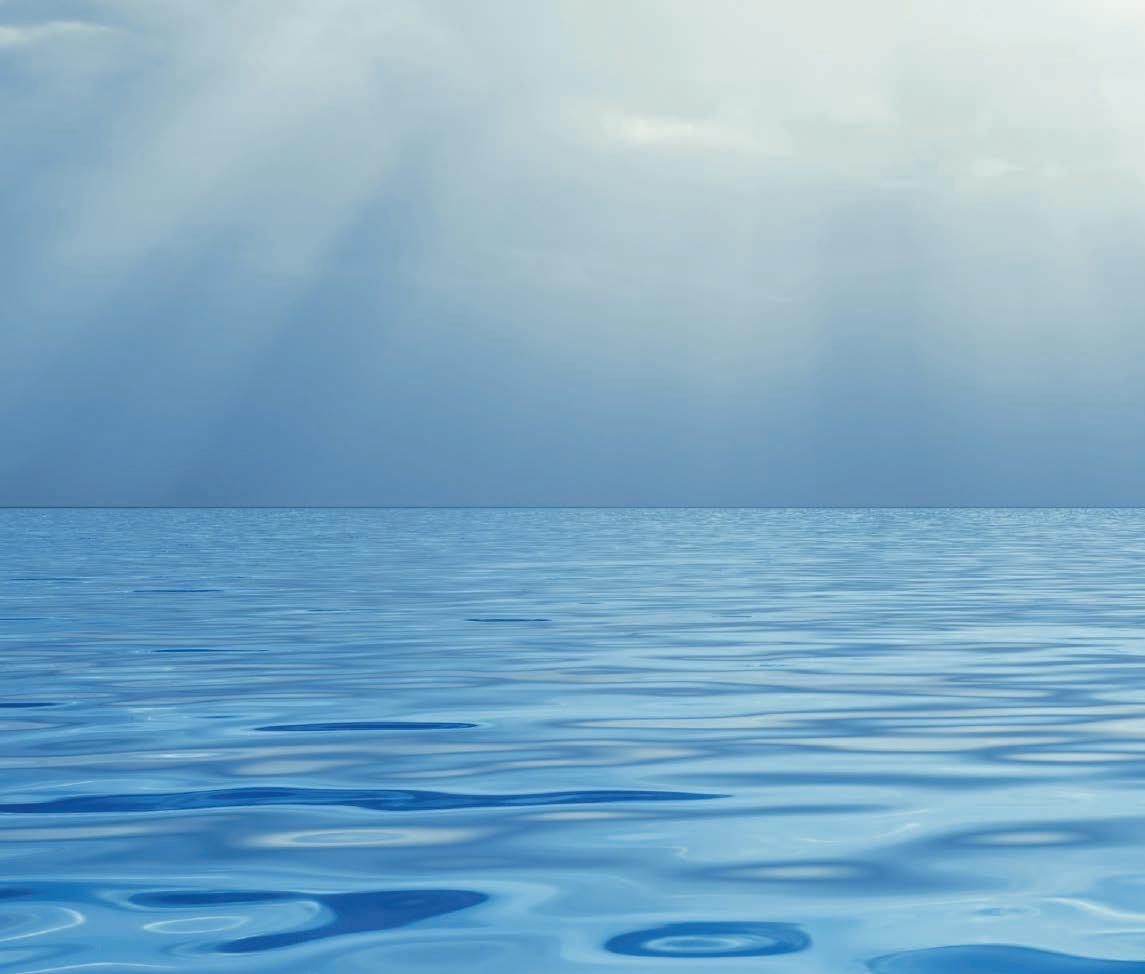






Nantucket Current provides instant news to your phone or email inbox. The news doesn’t wait to break every Thursday, so why should you? Discover why thousands of Nantucketers now view the Current as their single source of news.




For one night in April, the Nantucket Hotel was a ’90s sit-com series finale, as guests danced the night away like it was 1999 for the Nantucket Lighthouse School's annual fundraiser. Sony Walkmans, scrunchies, flannel and Doc Martens were back in style for this ‘90s prom fundraiser, as the Dave Matthews Band, Third Eye Blind, Whitney Houston and the best bands of the decade blared.






















The Dreamland Stage Company’s latest production, "Anastasia: The Musical," was a riveting trip back in time to the waning days of the Russian Empire that brought audiences into the throes of one of Europe’s biggest mysteries. Two casts composed of island students aged 7 to 18 performed the musical over three nights and two Saturday matinees in February, telling the classic and heartwarming tale of love, family, longing and discovery.















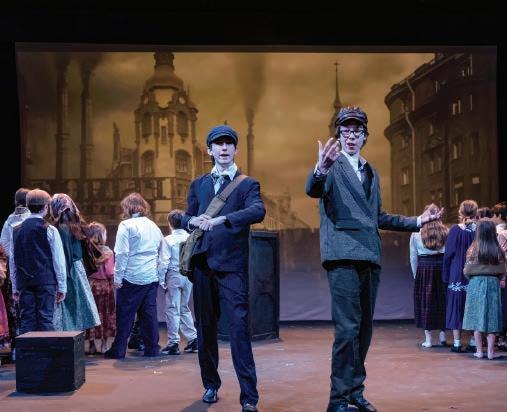




The Nantucket Whalers wrapped up the fall and winter seasons with their heads held high, led by girls field hockey, which put up one of its most successful seasons with a record of 14-4-2. Girls soccer, meanwhile, ranked #22 in the state tournament in the fall.
On the boys’ side, the Whalers football team ousted Martha’s Vineyard in an overtime thriller at Fenway Park to secure the Island Cup, while the boys cross-country team won the Lighthouse Division championship. Nantucket continued to impress over the winter, with the boys and girls swim team going on to states, though boys and girls basketball, as well as boys hockey, failed to qualify for the playoffs. The Nantucket Current was there to cover it all.





















On the Sunday of St. Patrick’s Day weekend, the Irish Rambles took to the Muse for a lively afternoon of dancing, singing and Irish affair for the Bridge of Culture: Henry Varian Fellowship’s annual Céilí. The Céilí, a traditional Irish social gathering, is a celebration not only of Irish culture, but of the hundreds of Nantucketers who have emigrated from Ireland over the past century and the community they’ve formed on Nantucket.


















A look back at the parades in downtown Nantucket and Sconset through the years.


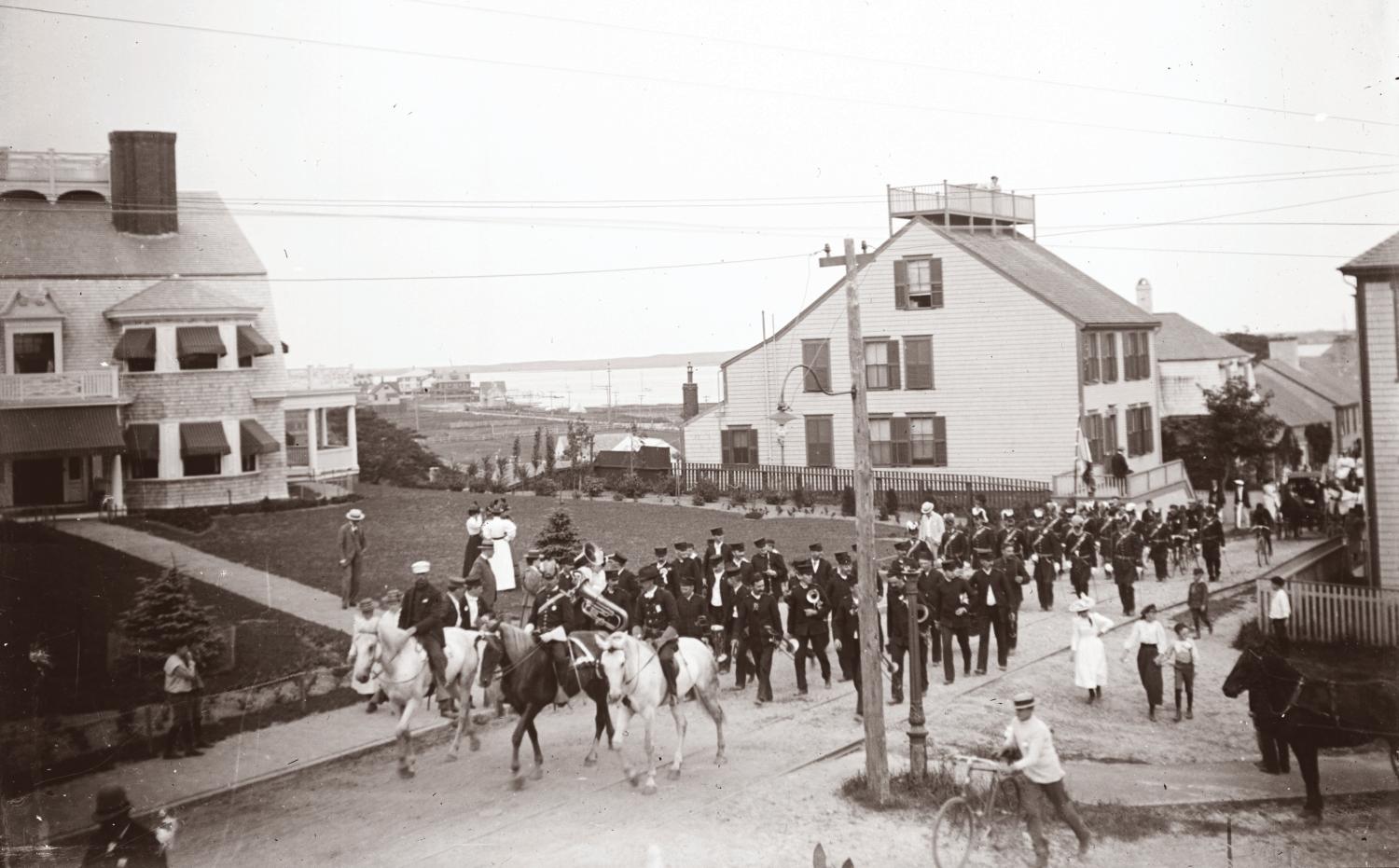





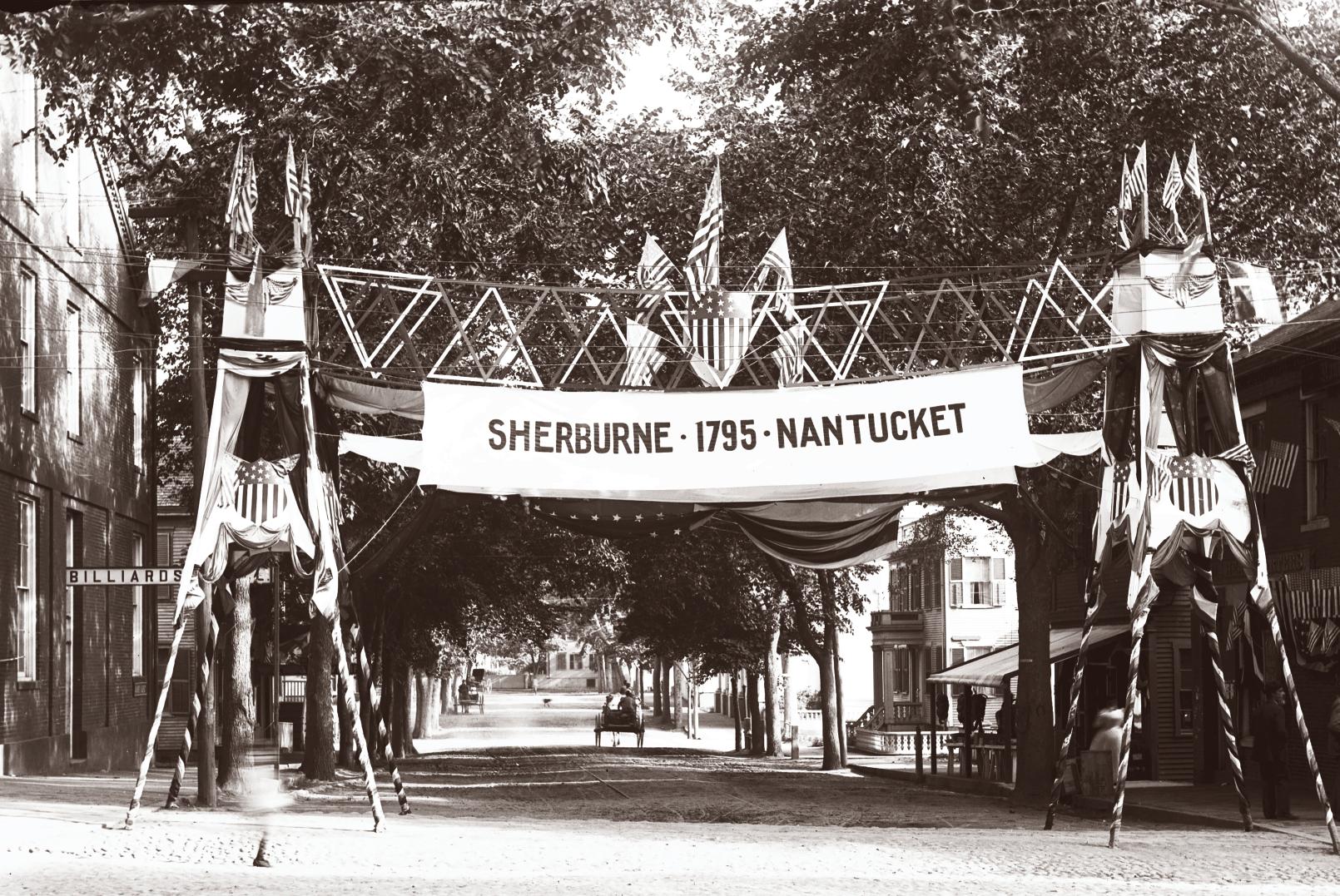














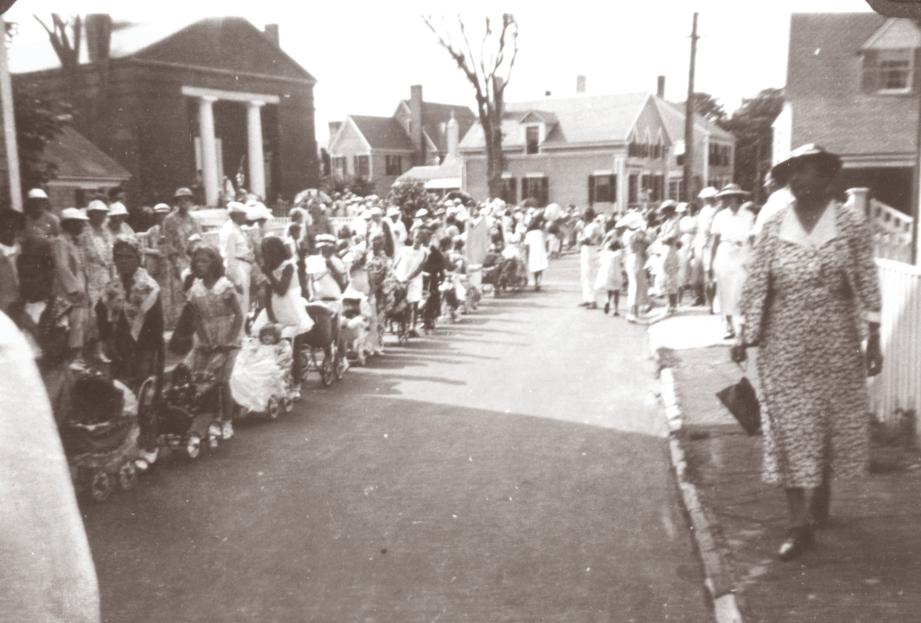




The fact that hunger exists for 1 in 5 year-round residents on Nantucket is difficult to comprehend.
At present, there are over 12 organizations on the island that up to now, have been working independently to address food insecurity on the island. Nourish Nantucket will integrate all food insecurity systems on the island, enabling the various food programs to work collaboratively and to fundraise as one.
Your donations to Nourish Nantucket support the agencies whose missions are to provide food for those who do not have enough and build a permanent infrastructure so that the hunger problem is eradicated.
For further information on what we do or how to donate, please go to www.nourishnantucket.org or call us at 508.901.9201.

Pip Send it Box Program
Nantucket Food Pantry
Food Pantry Meal Program
Meals on Wheels
Fresh Connect
The Warming Place
Nantucket Family Resource Center Sustainable Nantucket Grow Boxes Women, Infants & Children (WIC)
WIC Breastfeeding Support
Our House SNAP















Bride: Gabriella D’Ambrosio • Groom: Eric Carey • Venue: The White Elephant • Event Coordinator: Tsvetelina Benova • Photographer/Videographer: SAE Photo Film • Caterer: The White Elephant • Cake: PPX • Florist: American Stems • Officiant: Father Patrick • Bridal Hair: Lindsay Walsh, RJ Miller Salon • Bridal Makeup: Makeup by Paolina • Bride's Dress: Lʼelite Bridal Ines Di Santo • Groom's Tuxedo: Sordillos Custom Clothing • Band: Boston Common Band Favors: Sip and Sea Boutique • Live Artist: Leyah Jensen








76 Main, Ink Press Hotel
Atlantic Landscaping
Bar Yoshi
Cape Cod 5
Carolyn Thayer Interiors
CMC Construction
Compass - Ben Lincoln
Compass - Marybeth Gilmartin-Baugher
Compass - The Mazer Group
Douglas Elliman
Gail Roberts, Ed Feijo & Team
Great Point Properties
Heidi Weddendorf
International Wine Vault
Island Glow Nantucket
J Pepper Frazier Real Estate
Jobe Systems
Katherine Grover Fine Jewelry
Lee Real Estate
Marine
NEW
Noble Fine Art
Nourishing Nantucket
Payne Bouchier Fine Builders
Sandpiper Place II
The Ritz Carlton Residences, Boston
Toscana
TT





Over the past 20+ years, N Magazine has established itself as Nantucket’s leading luxury lifestyle publication and the most powerful advertising vehicle on the island. Renowned for its compelling content, stunning photography and premium production, each issue is hotly anticipated and becomes a permanent collectible in homes around Nantucket and beyond. Accordingly, N Magazine provides businesses with residual exposure unlike any magazine or newspaper of its kind.
To learn more about the many advertising opportunities available with N Magazine, contact Emme Duncan, Director of Advertising and Partnerships, at emmeduncan@n-magazine.com









